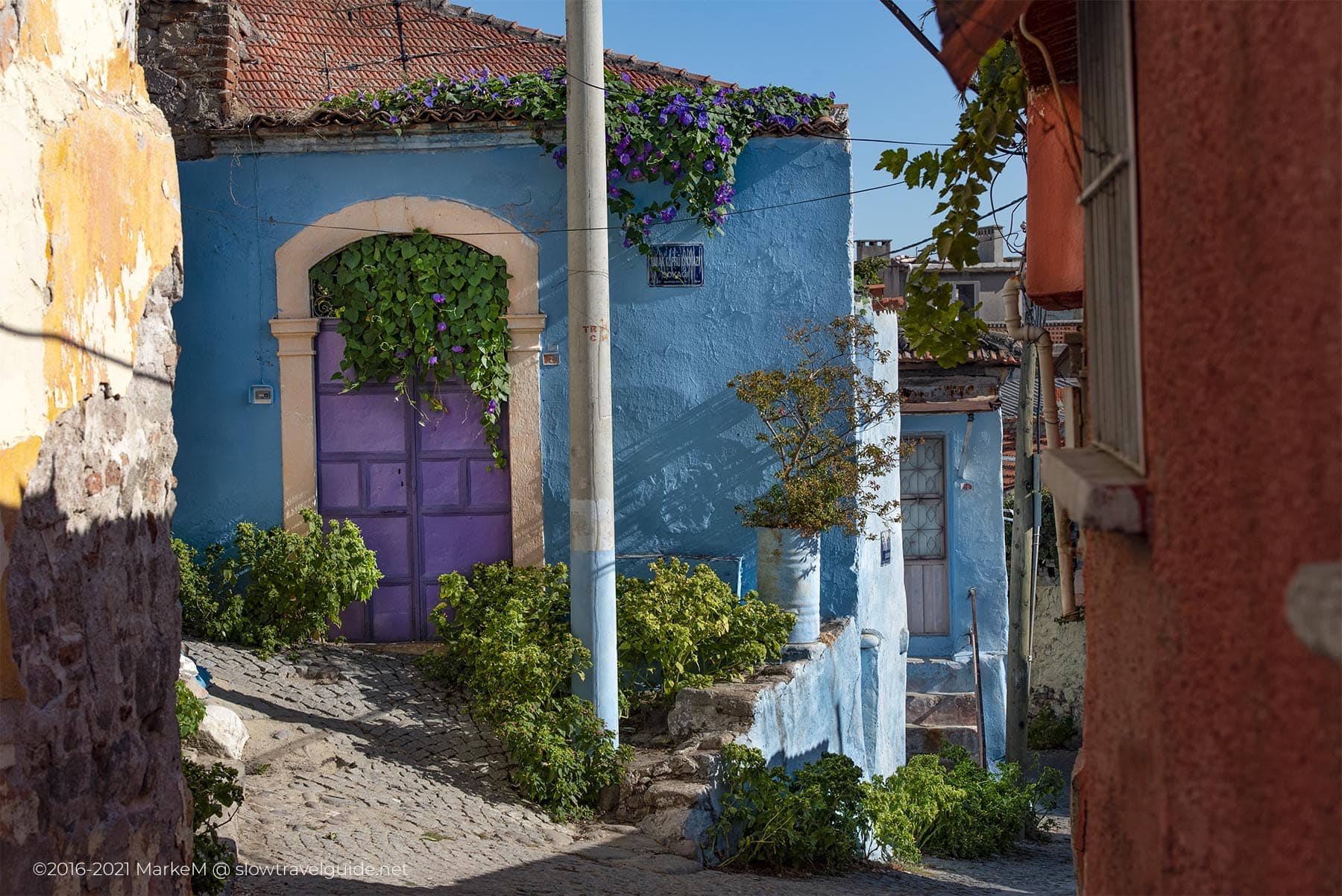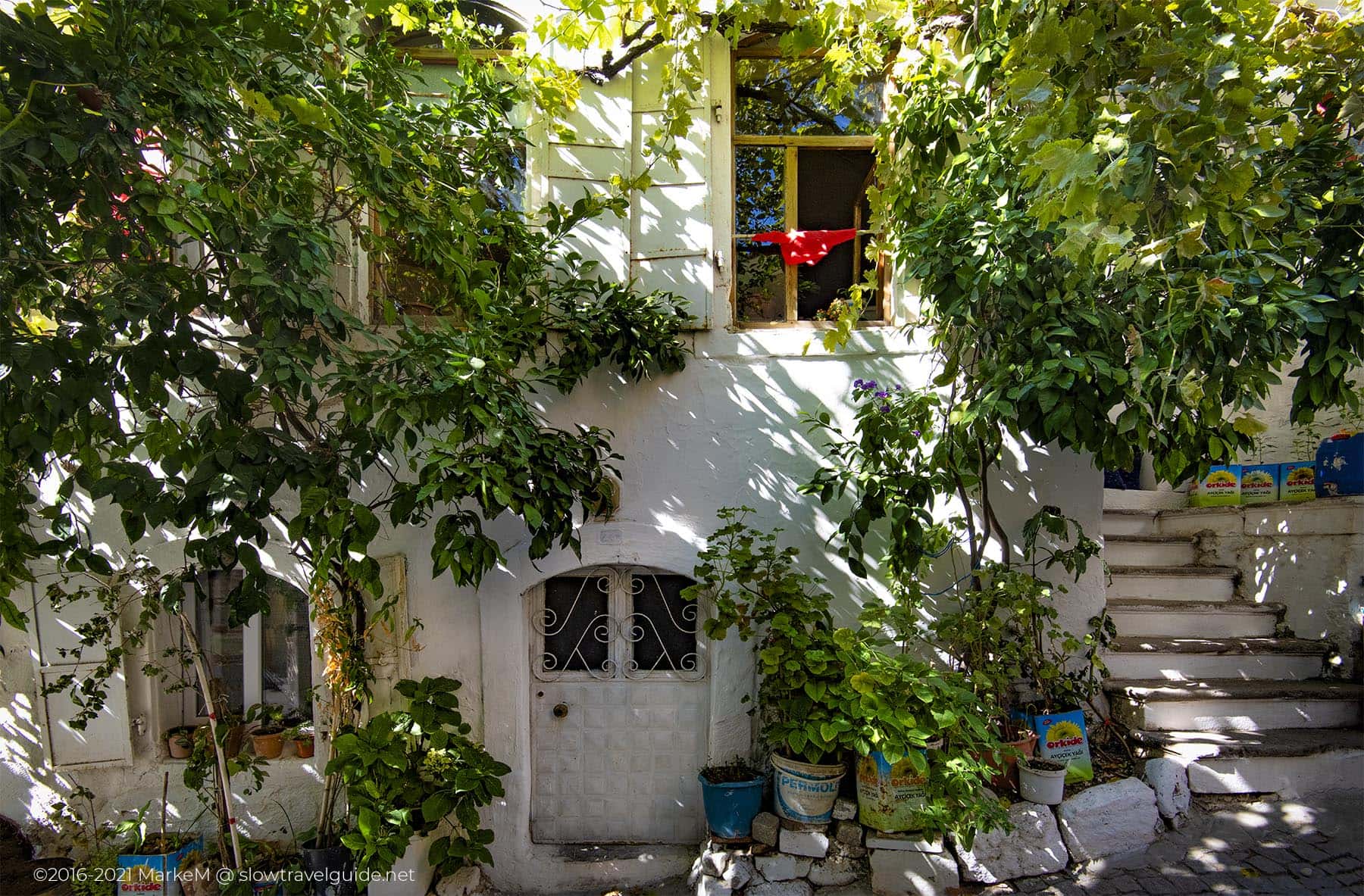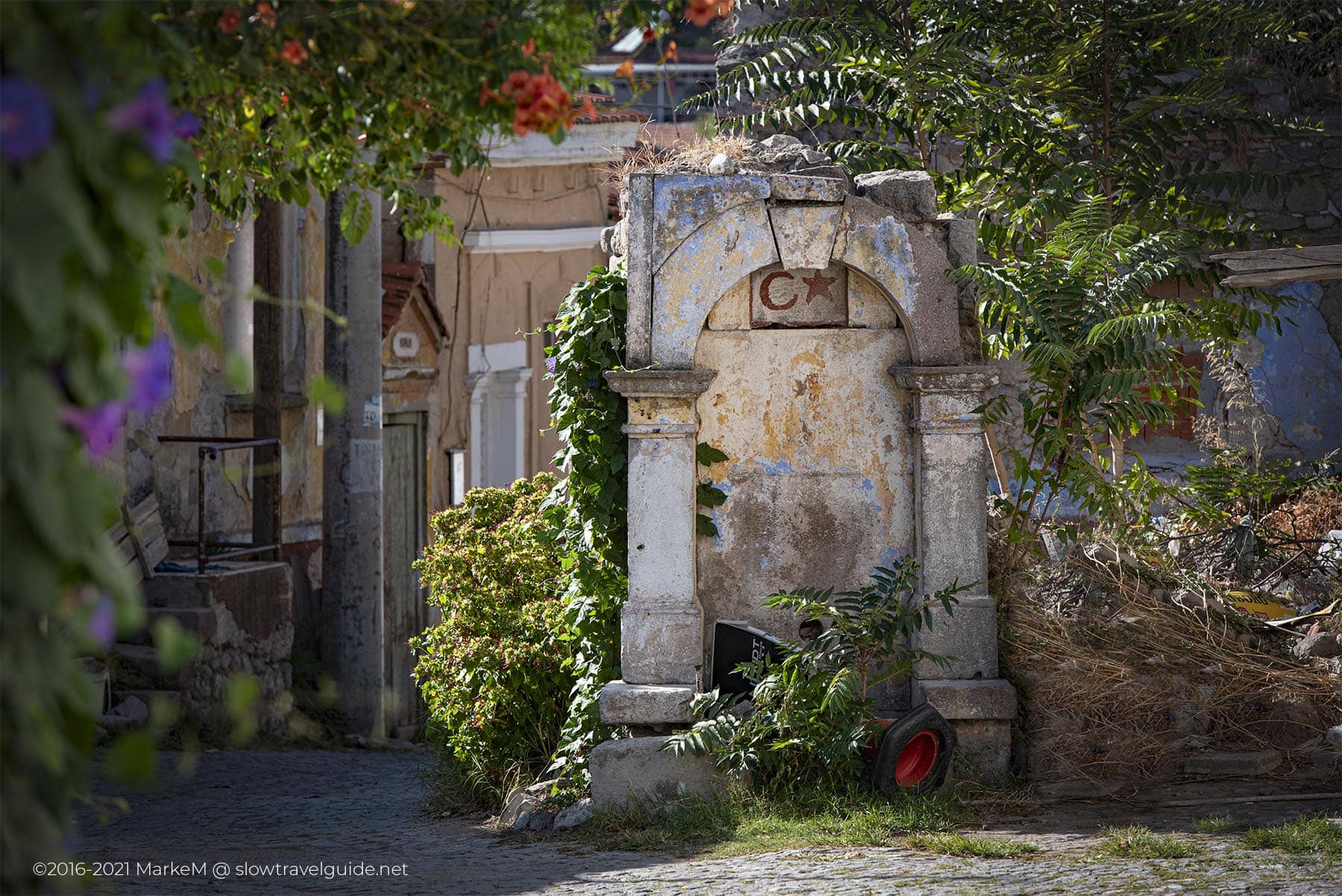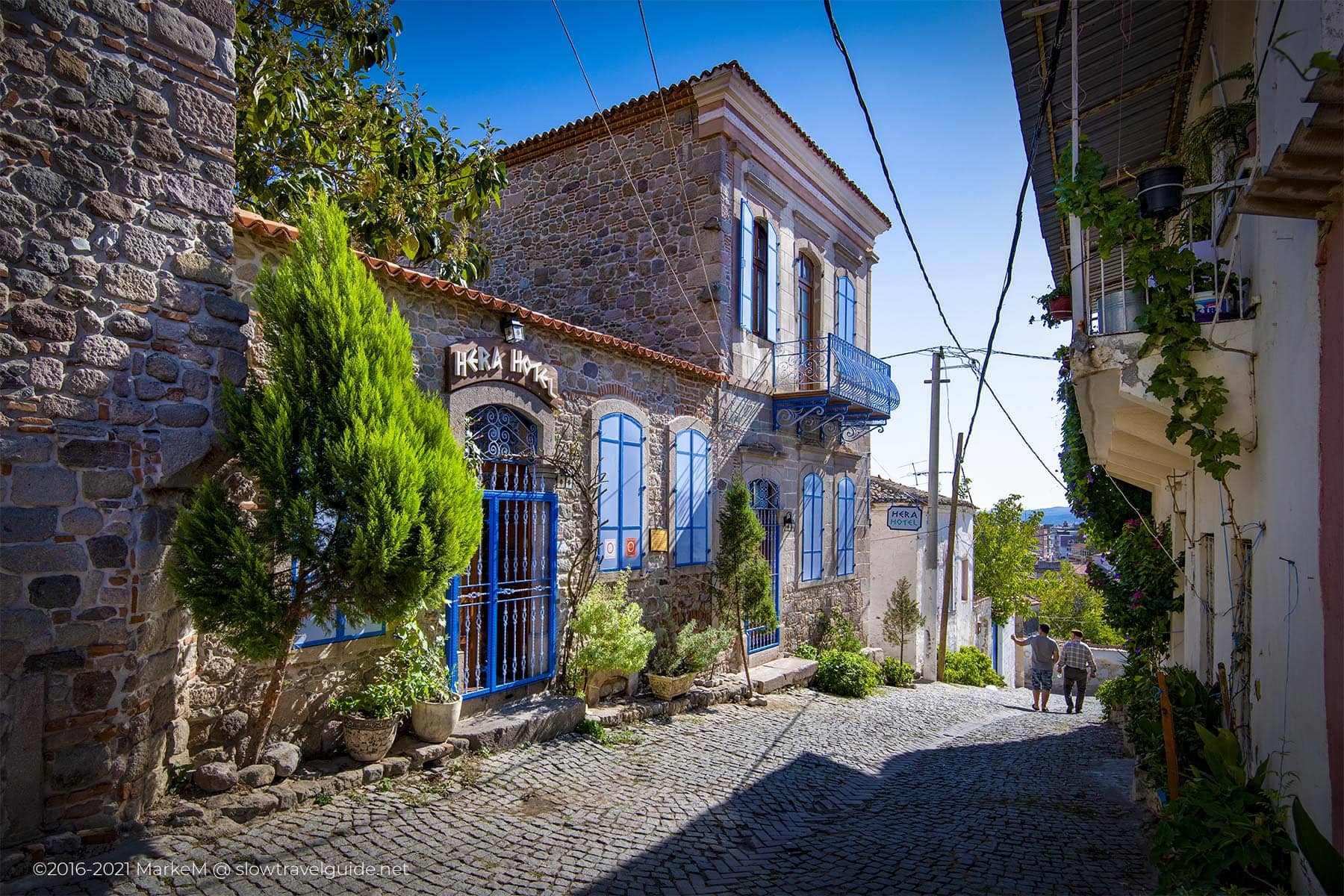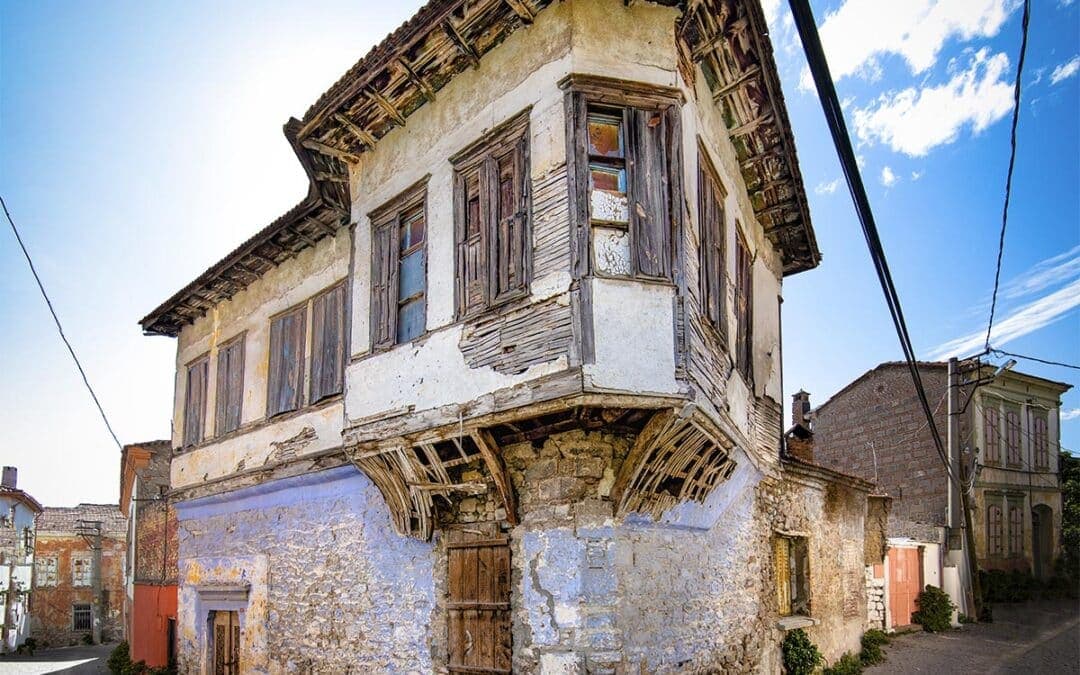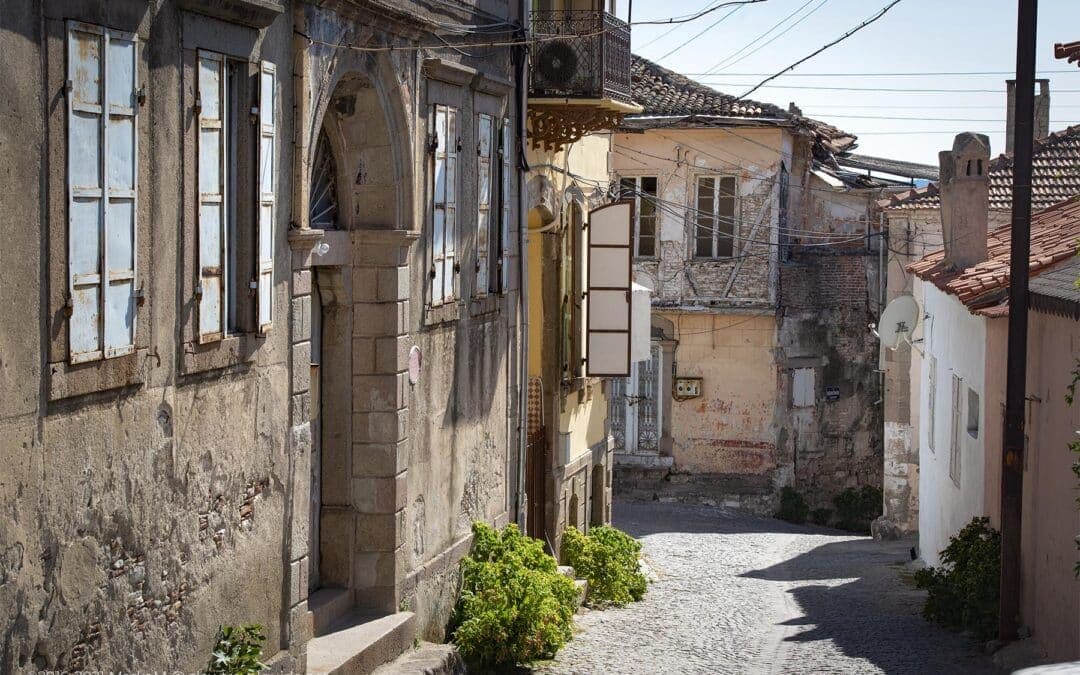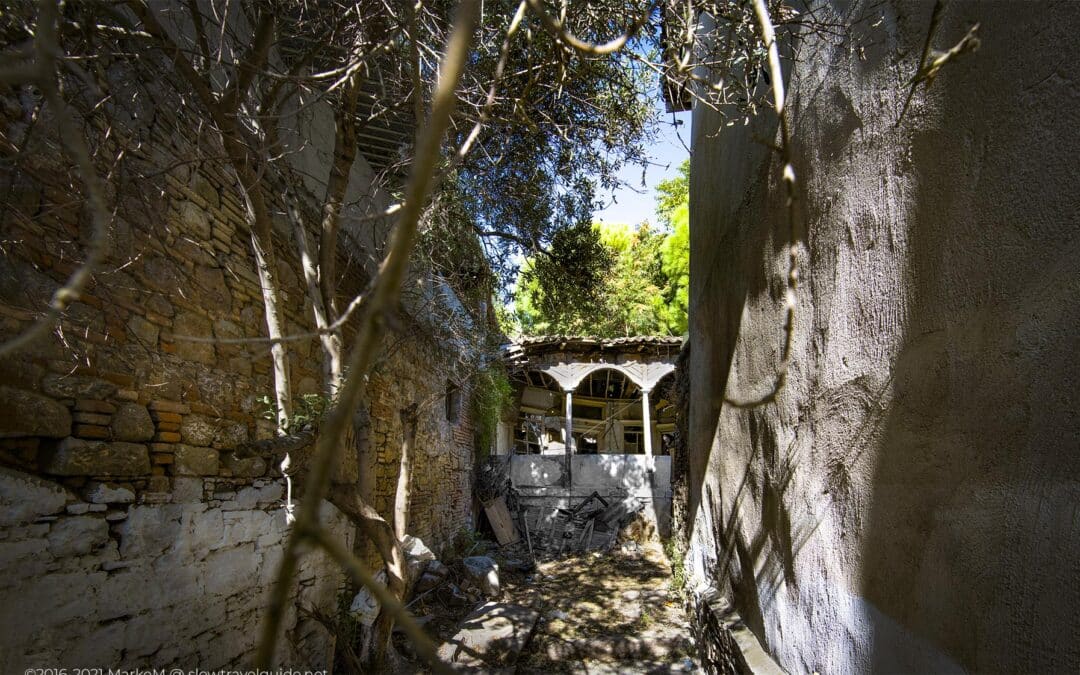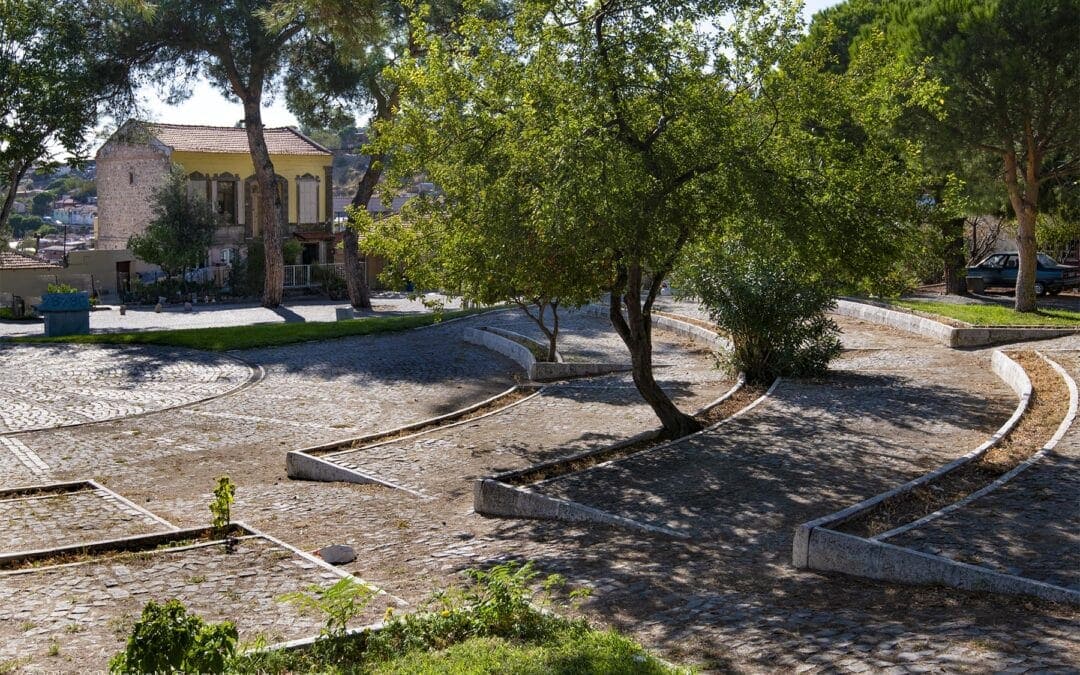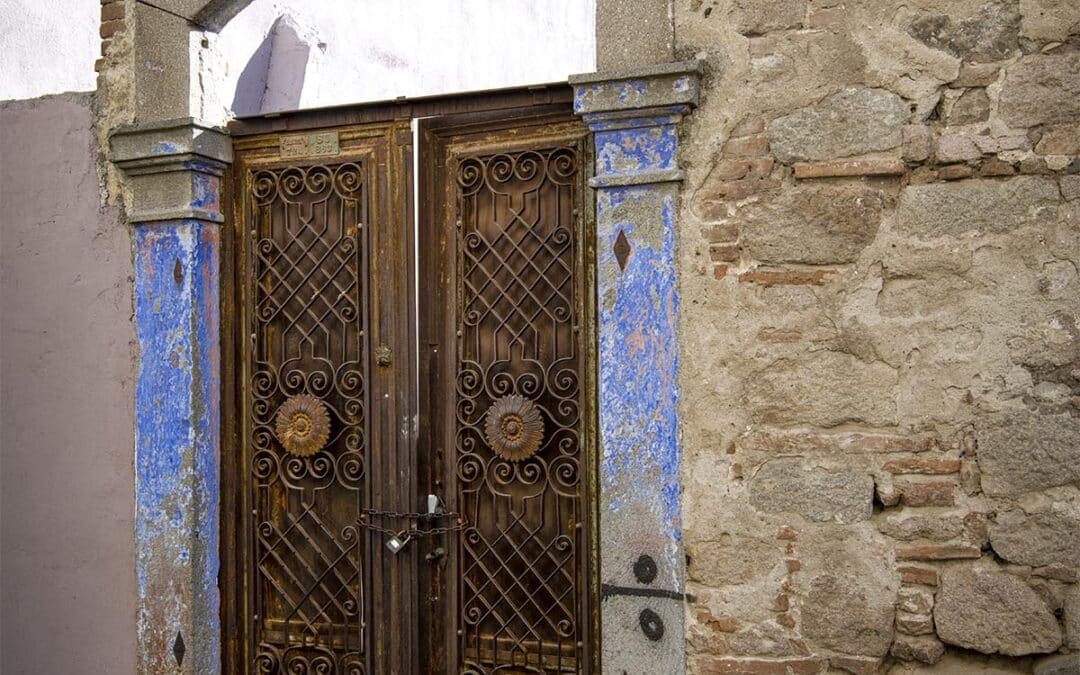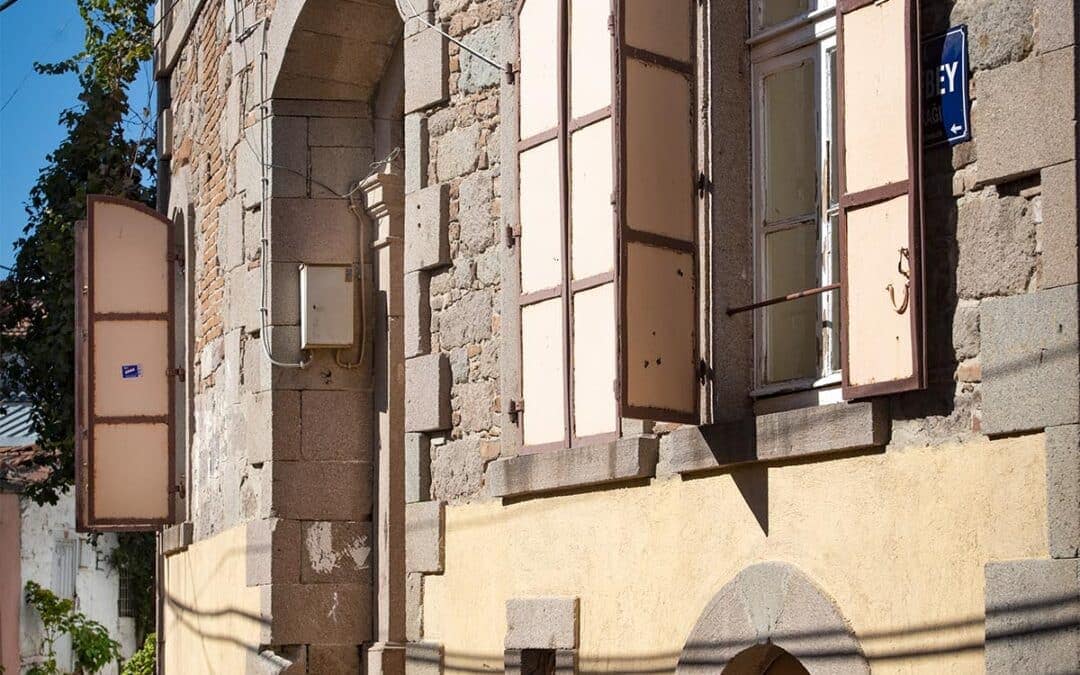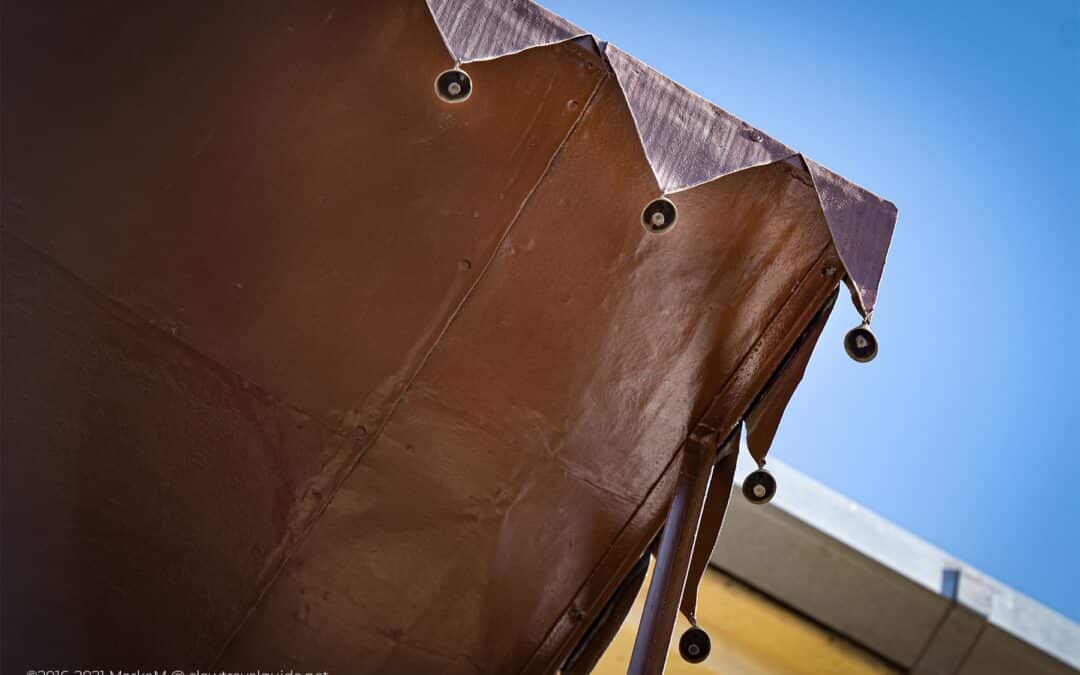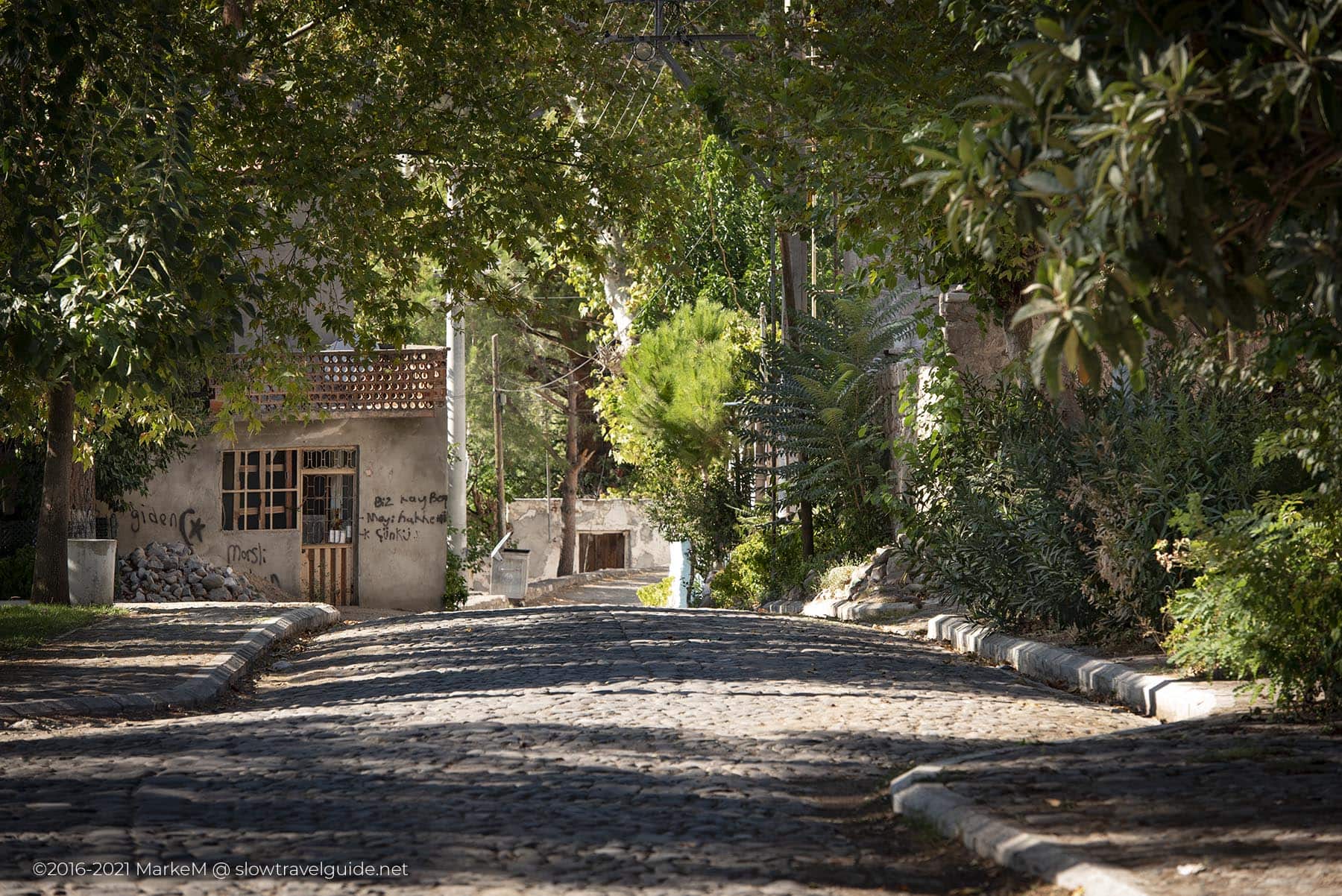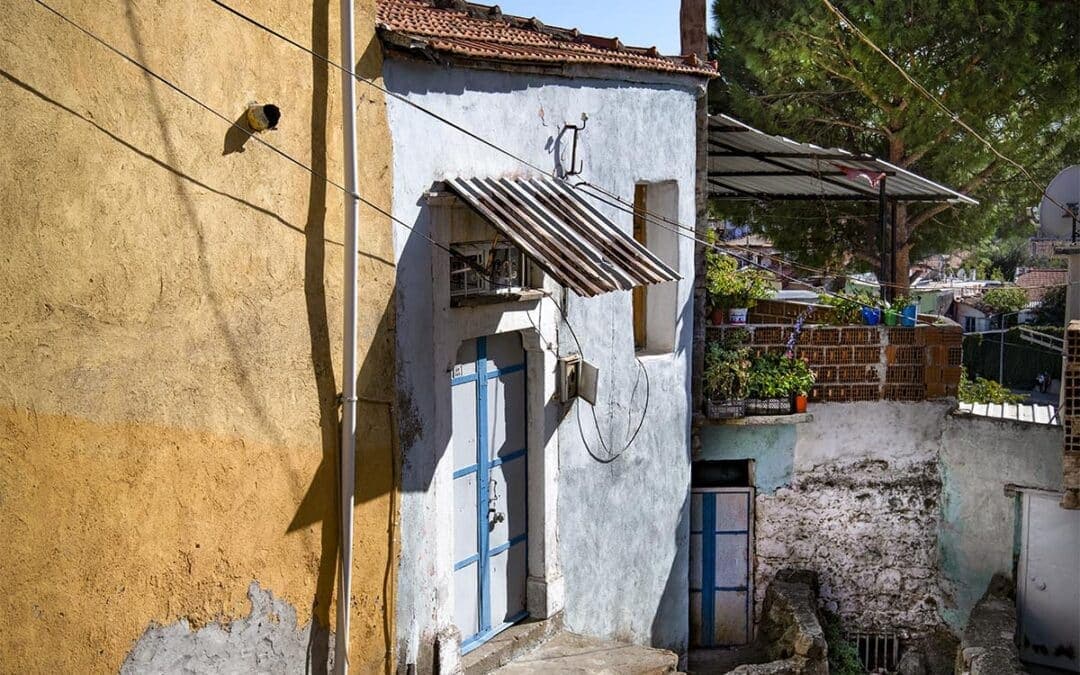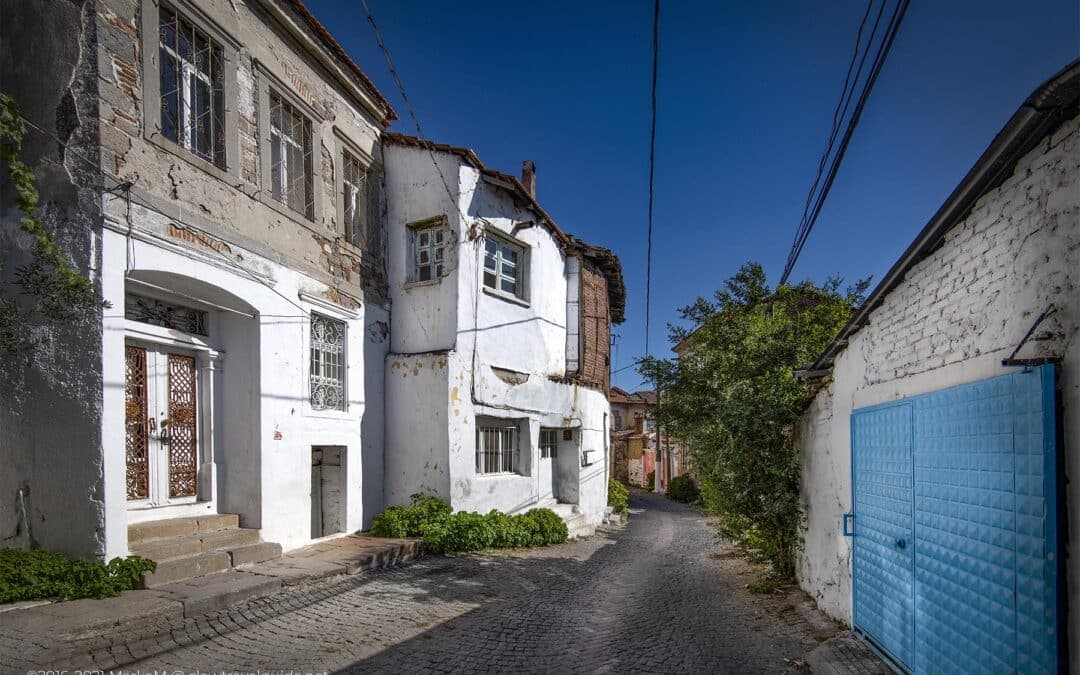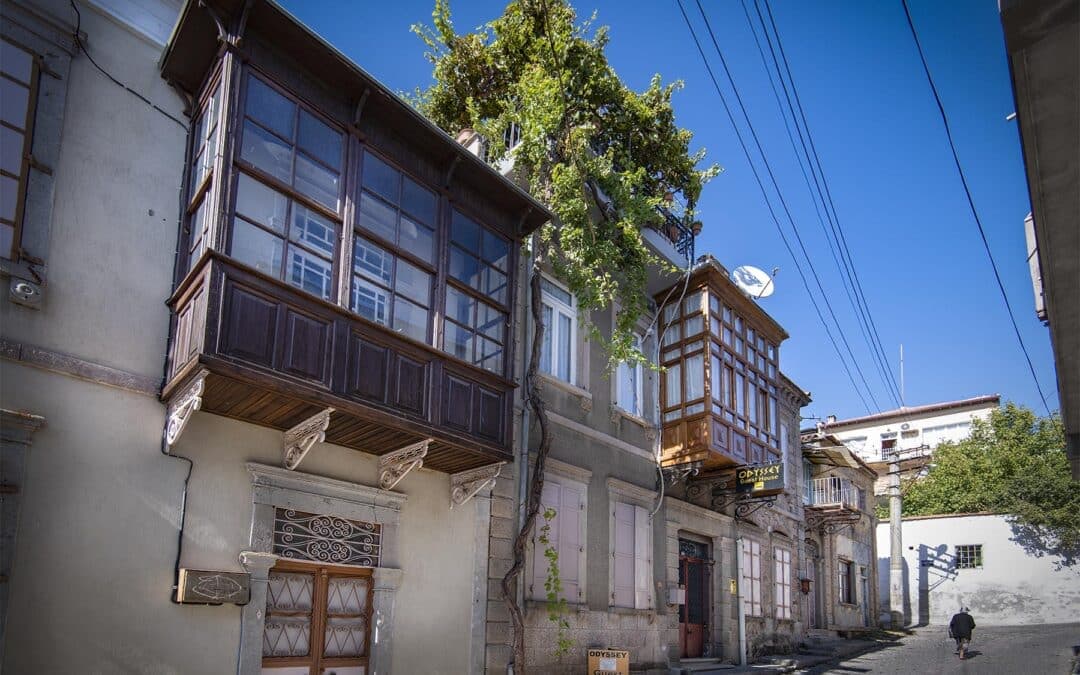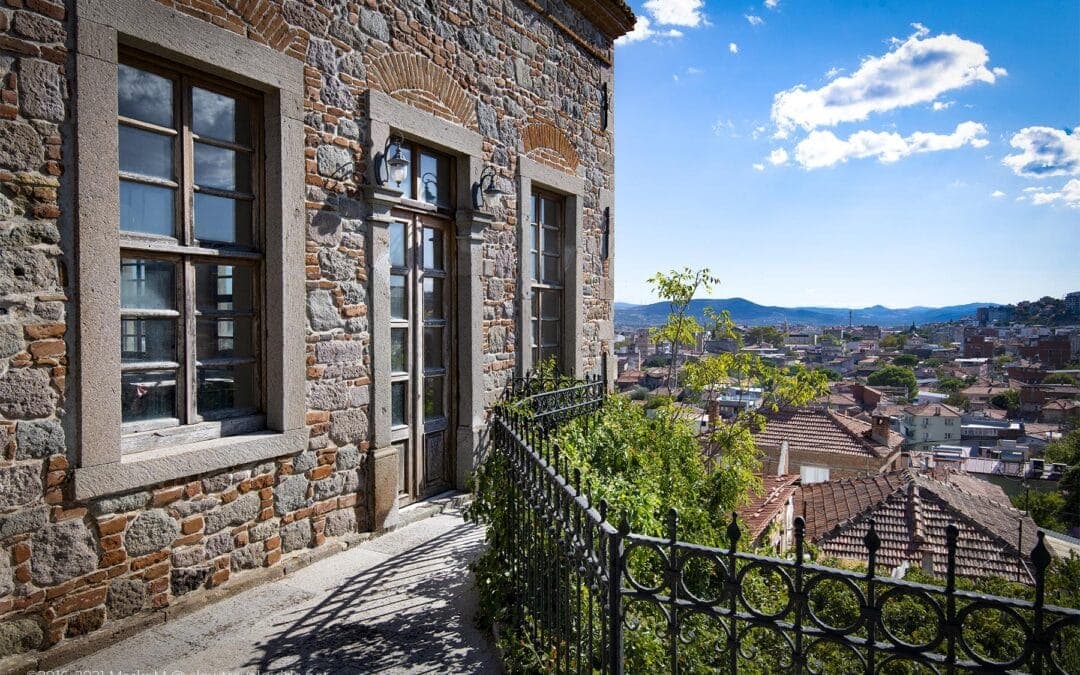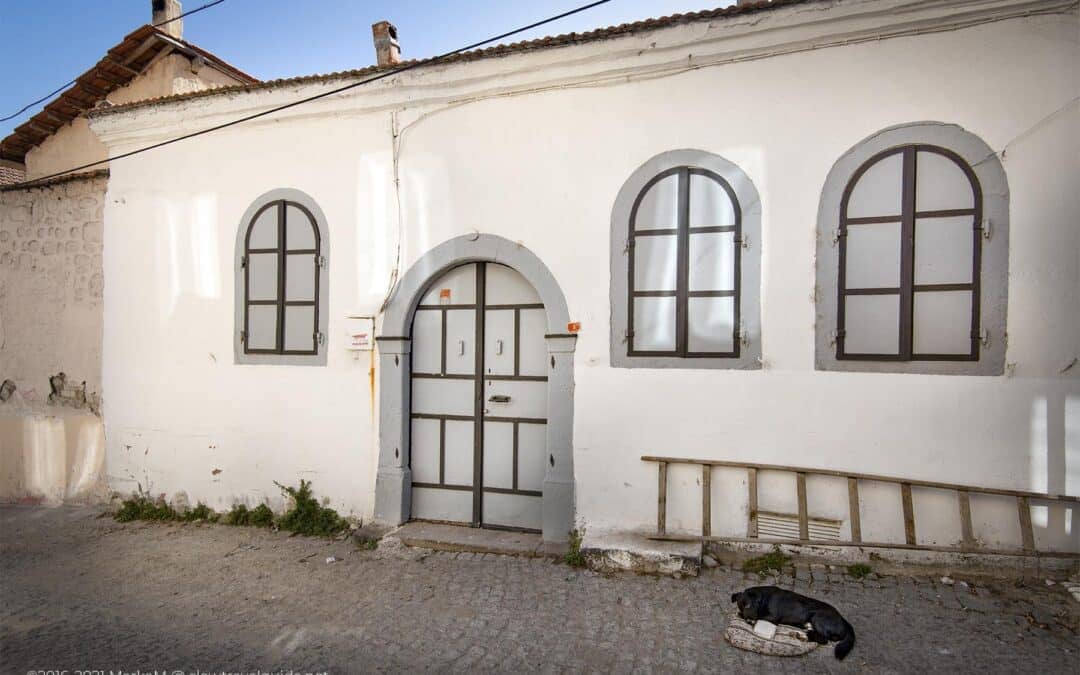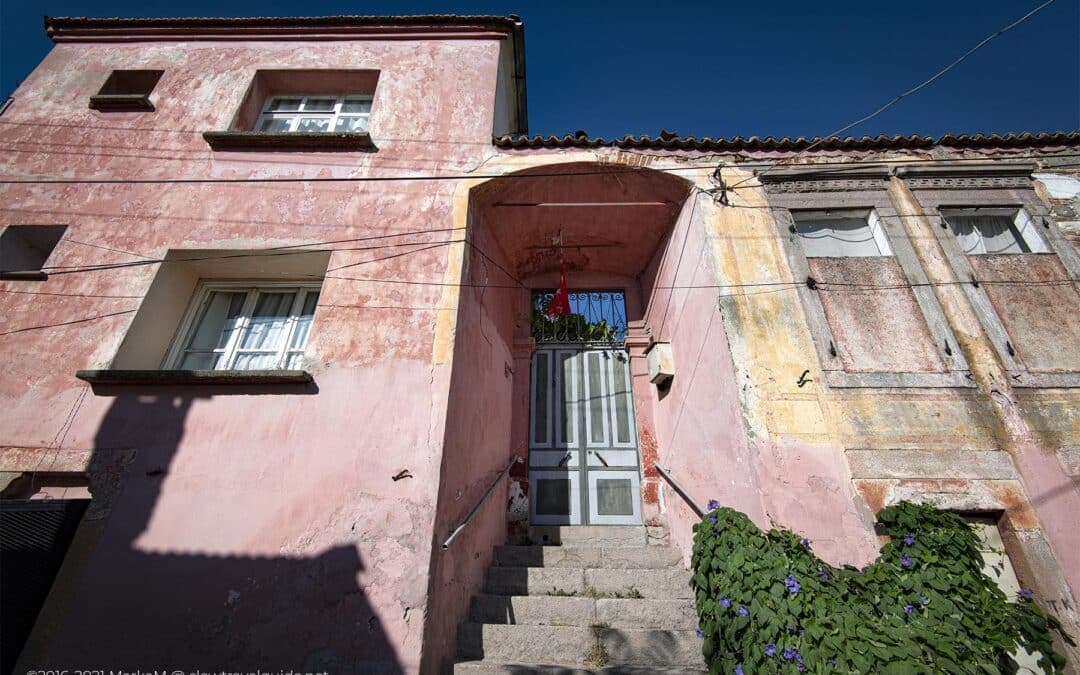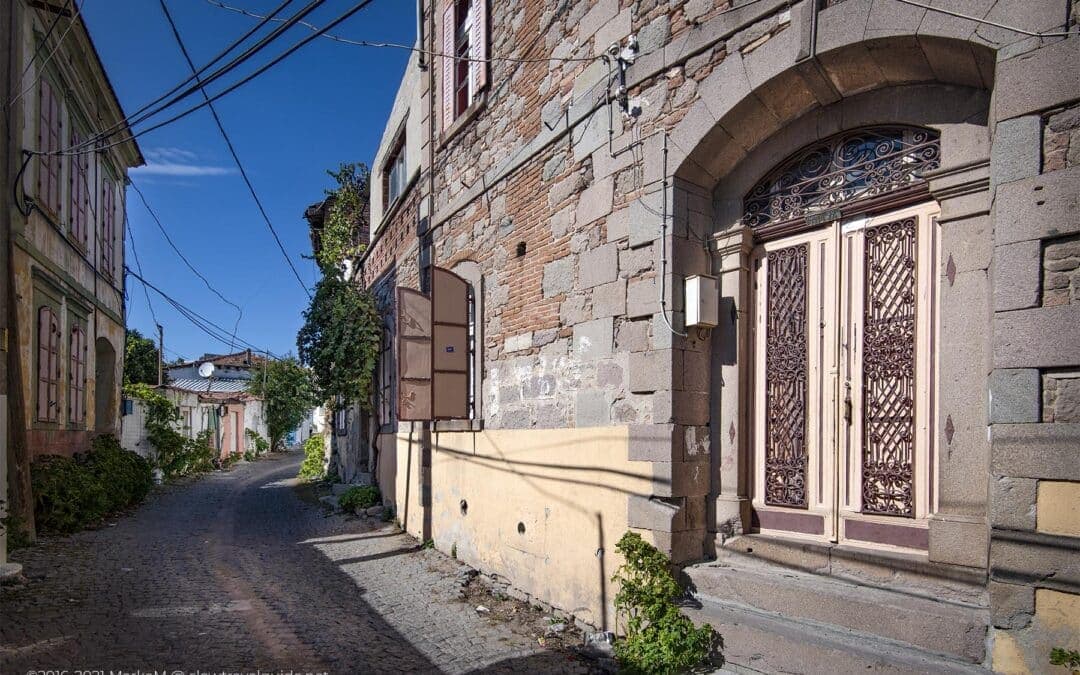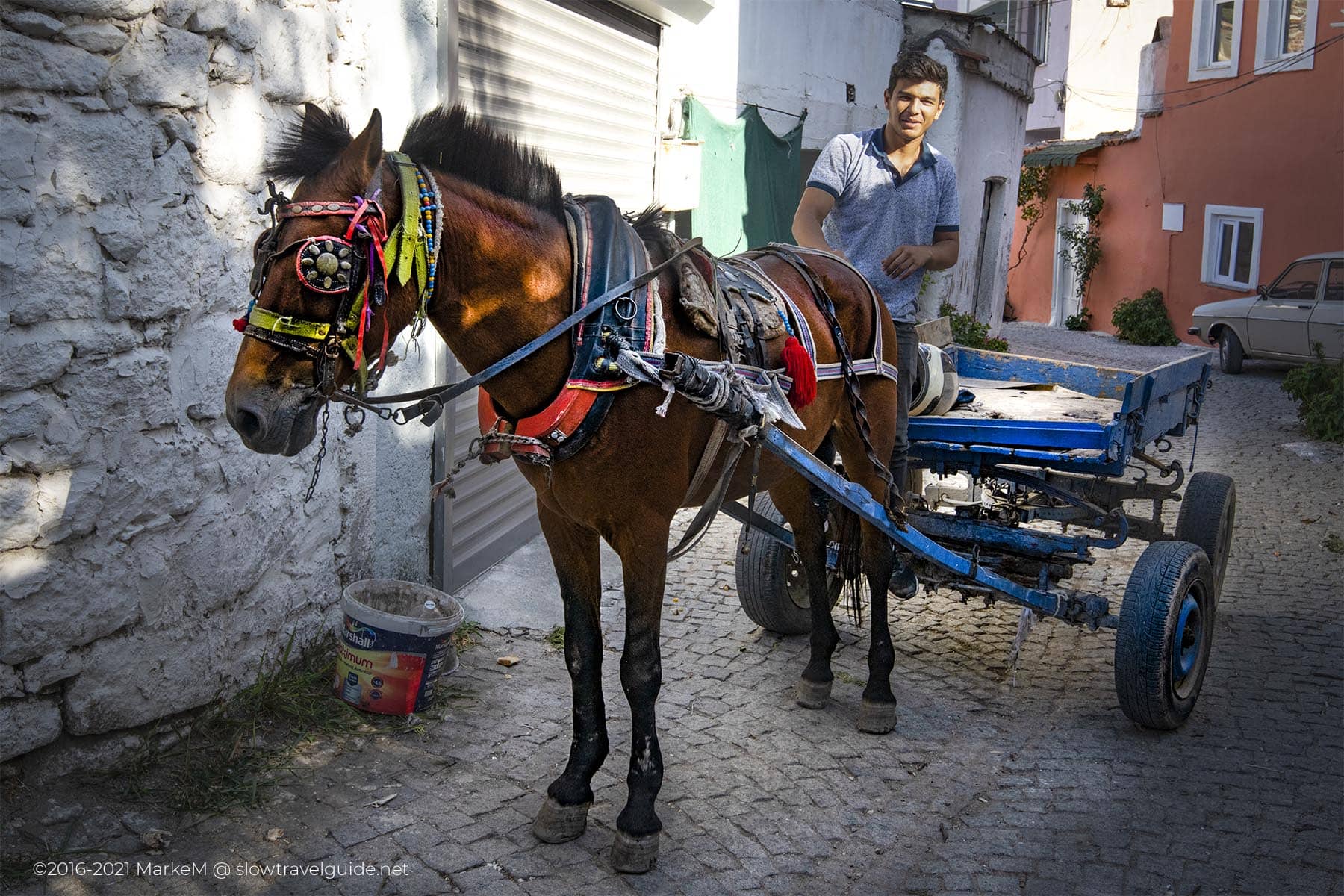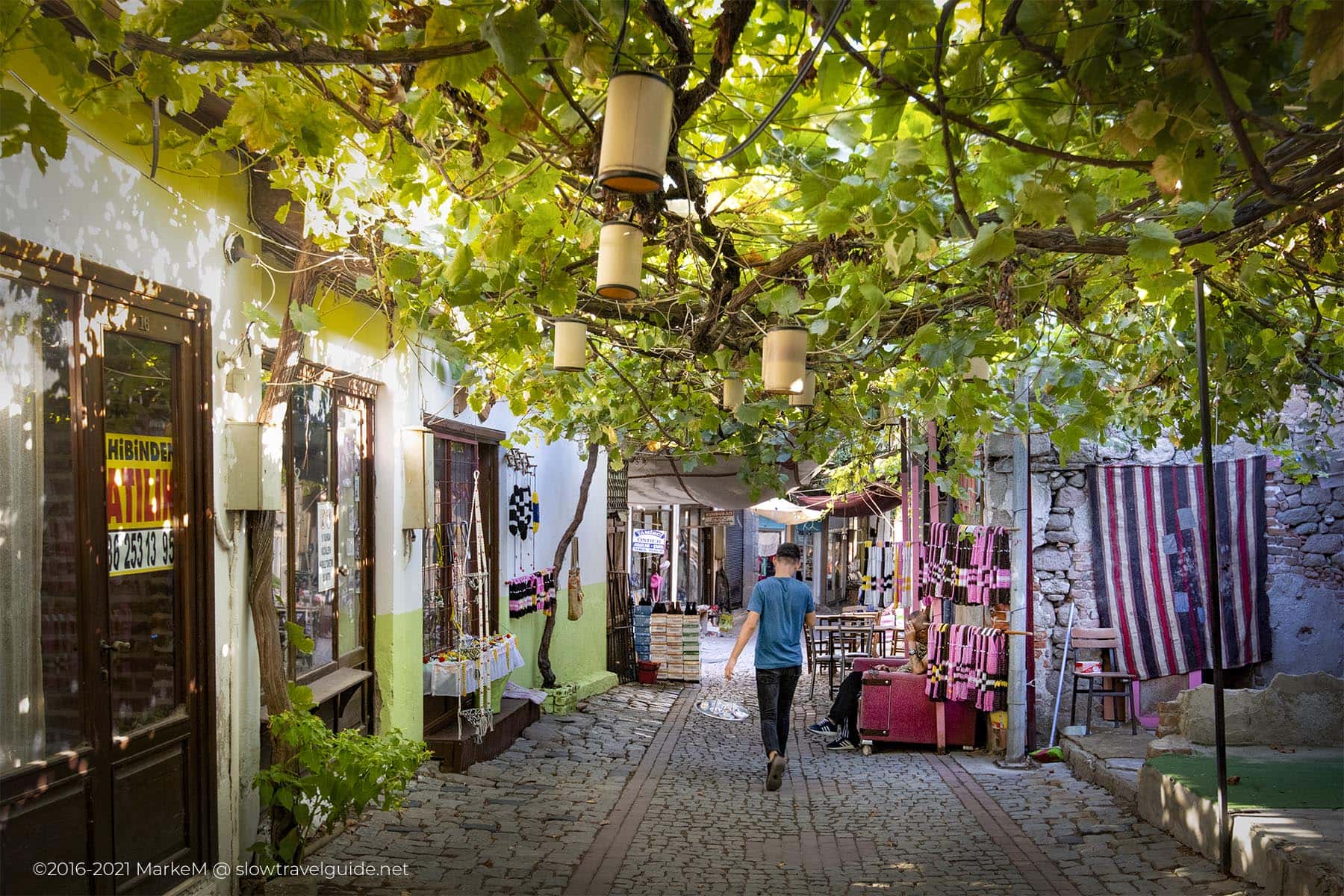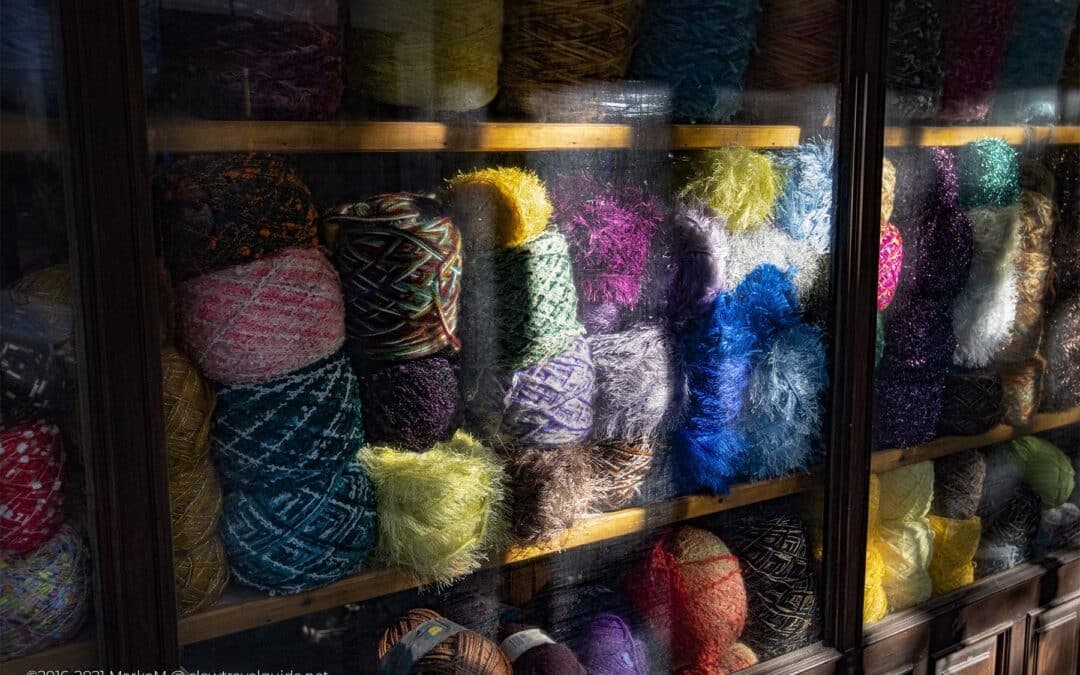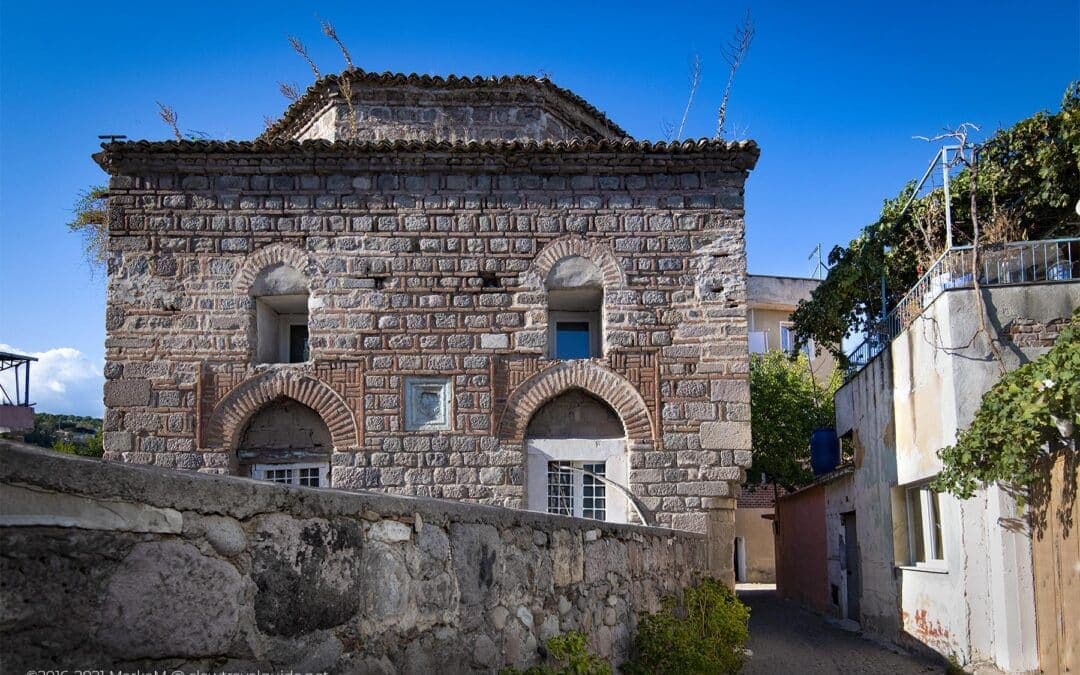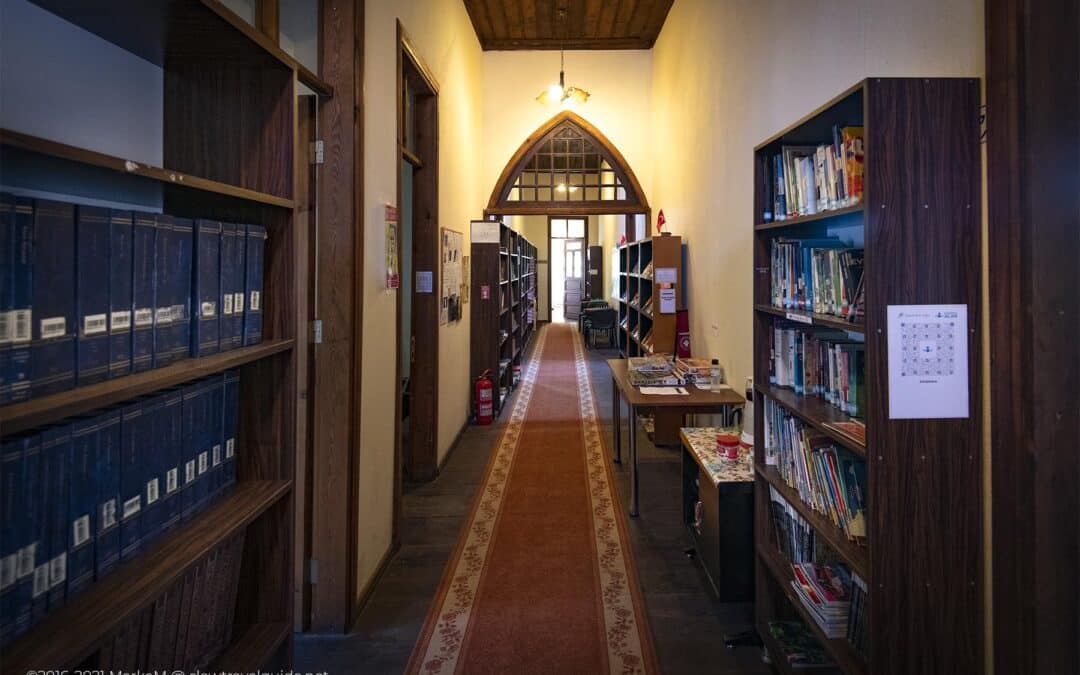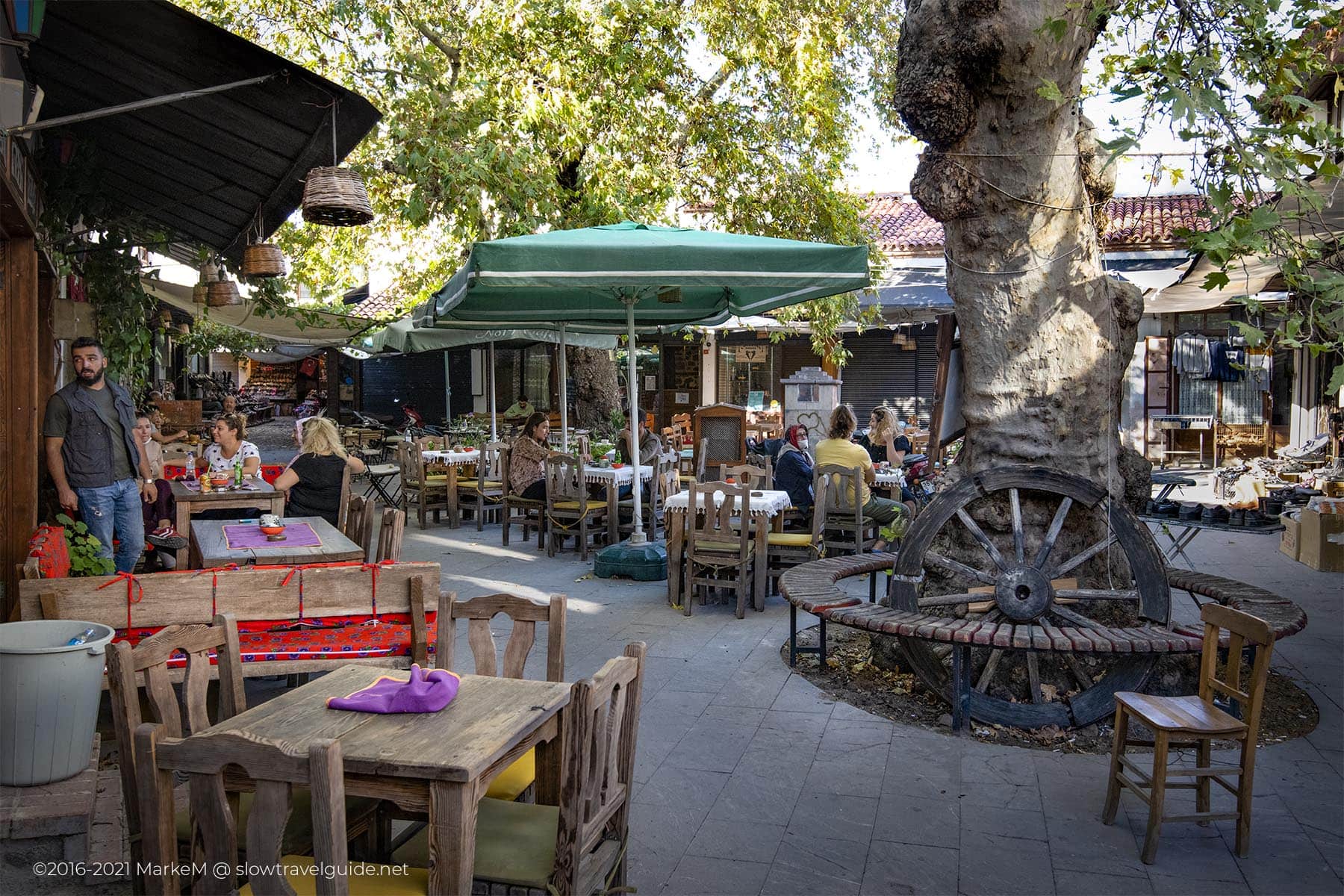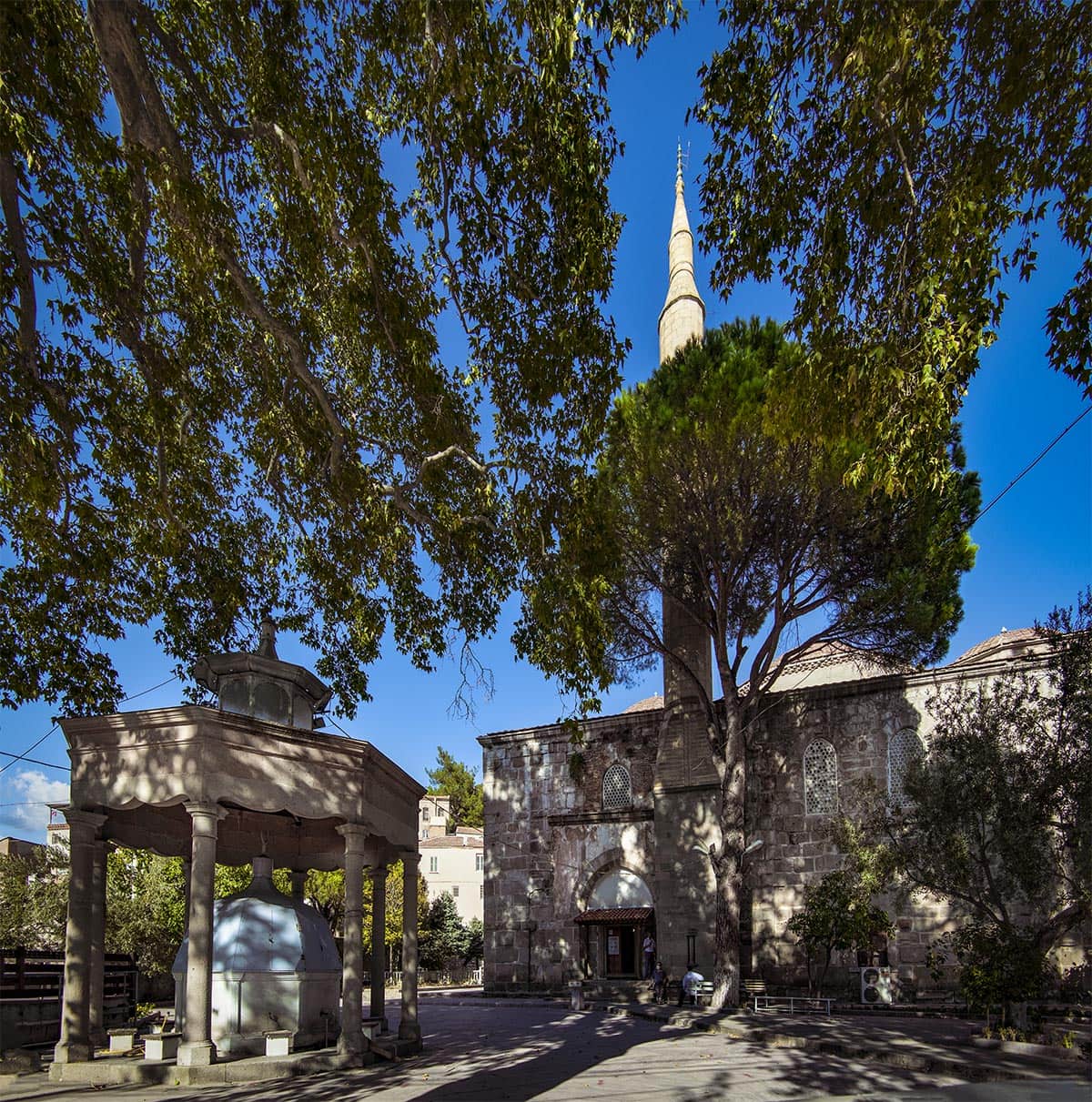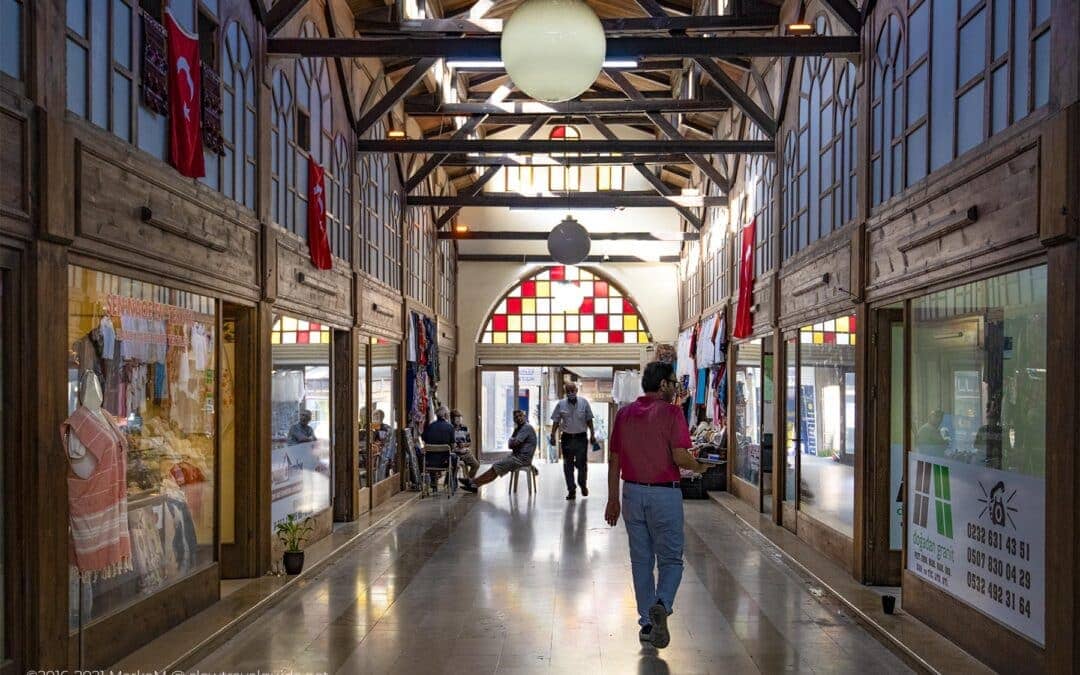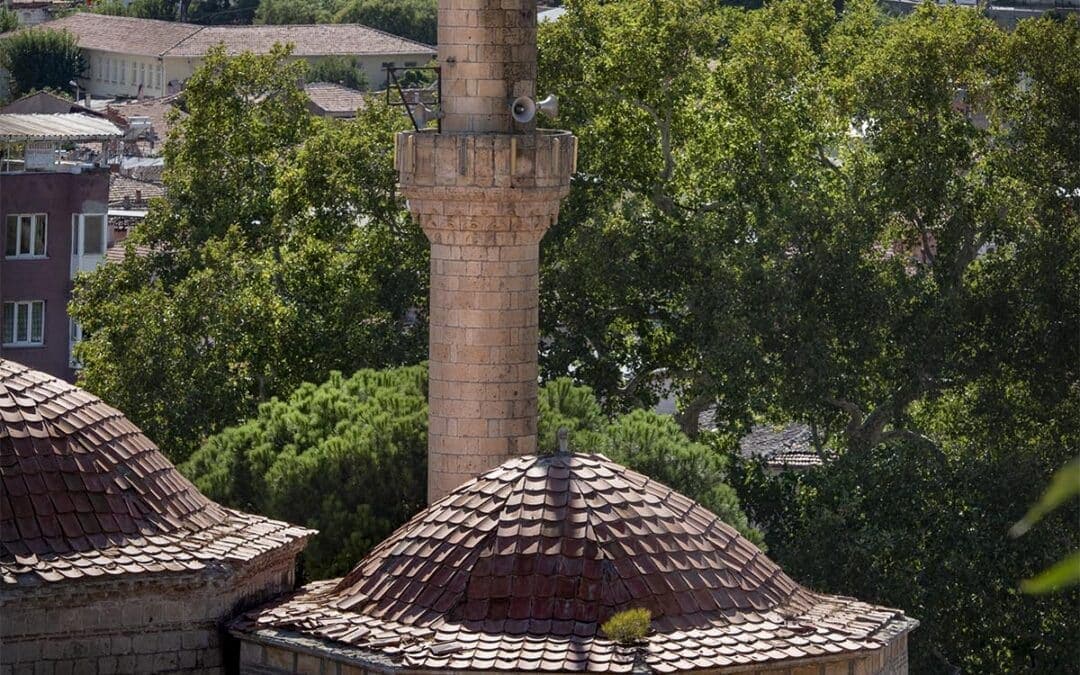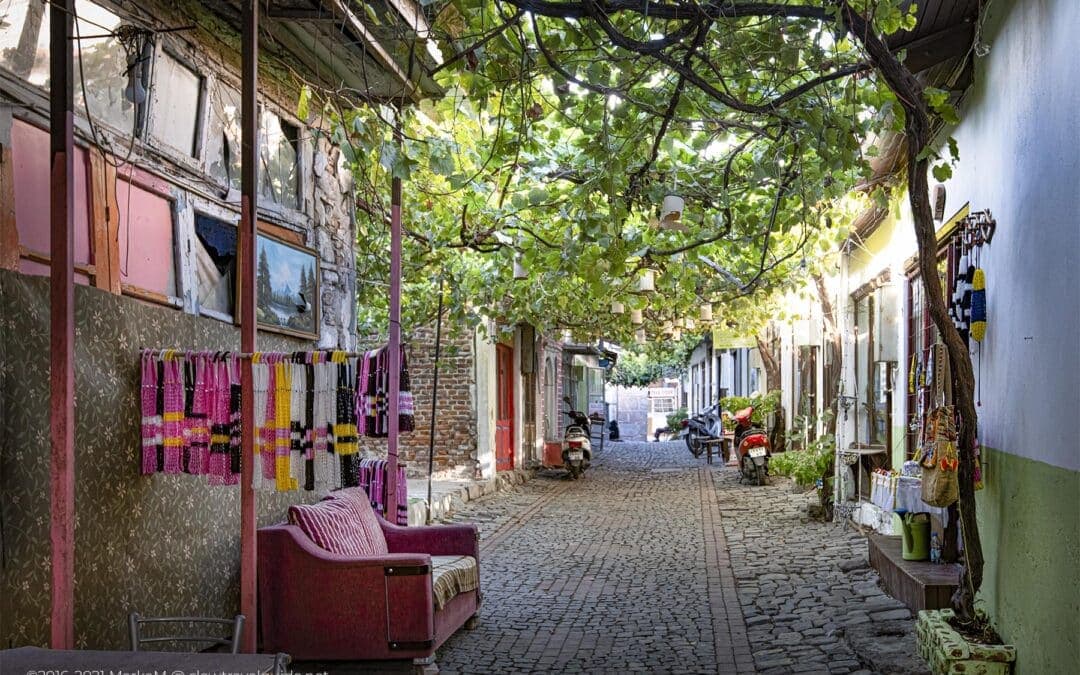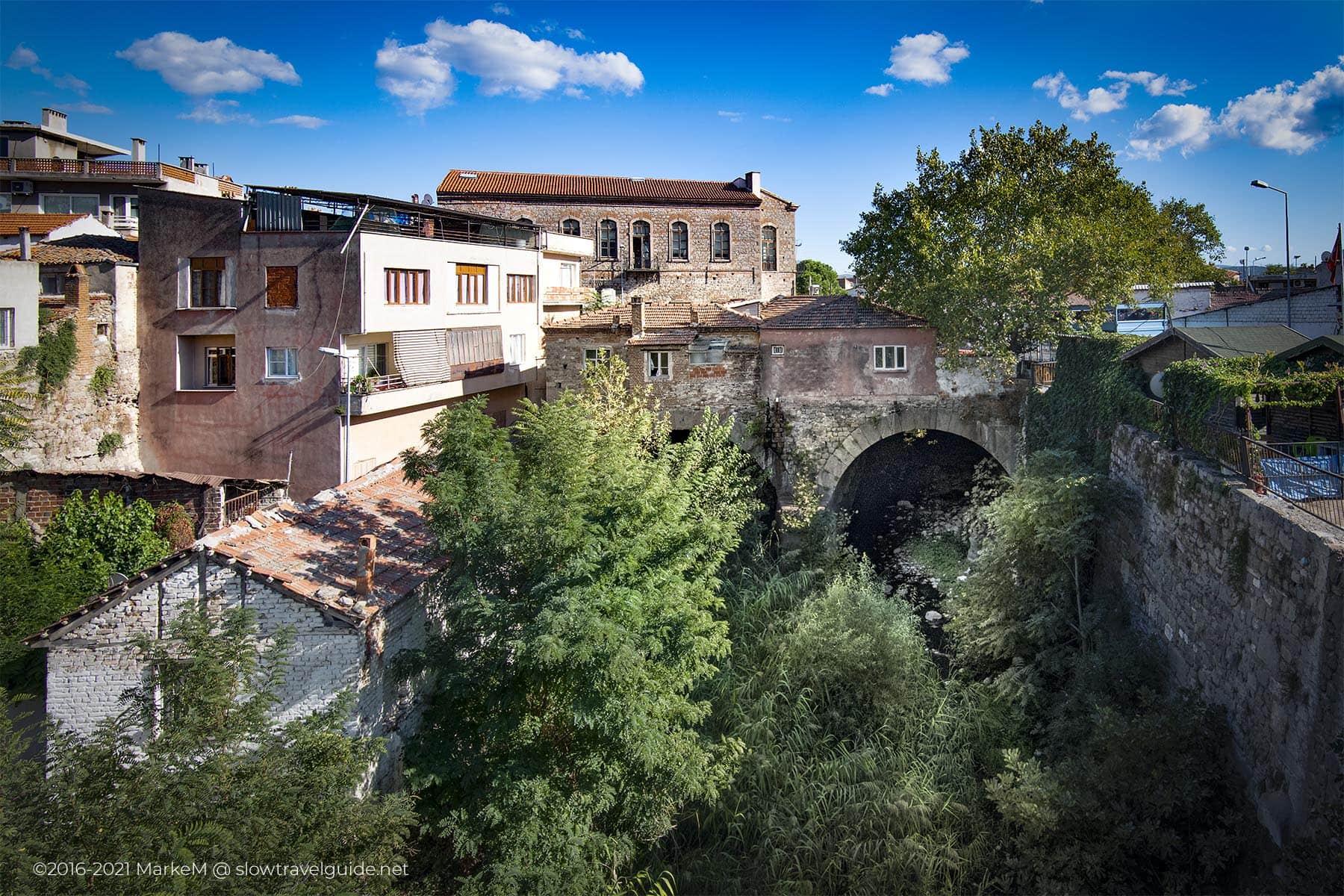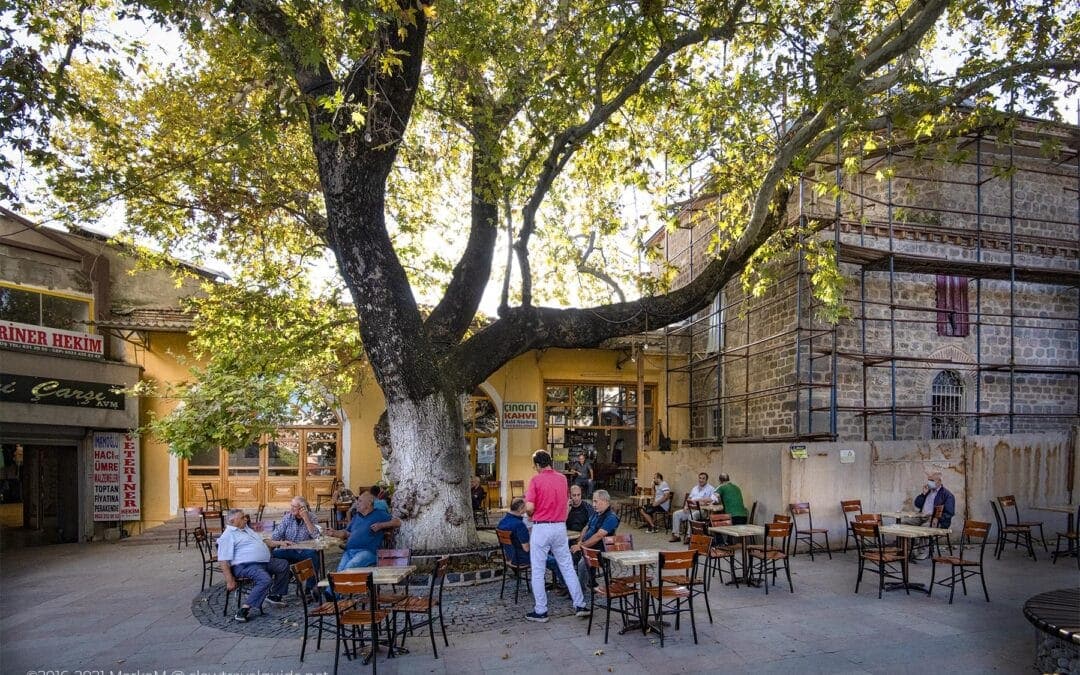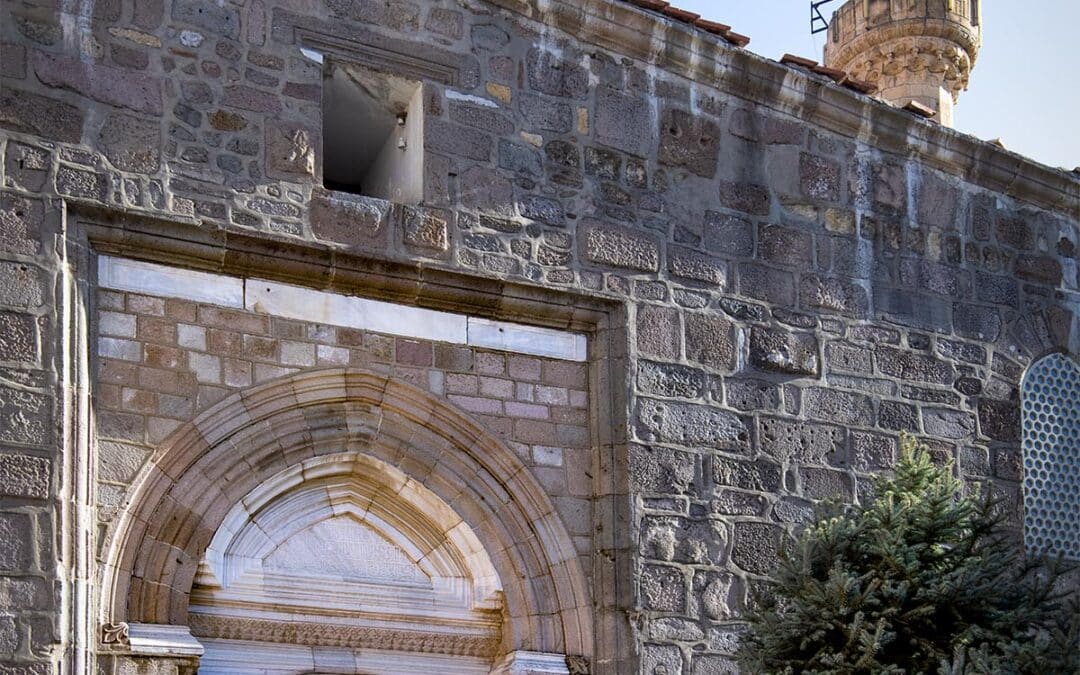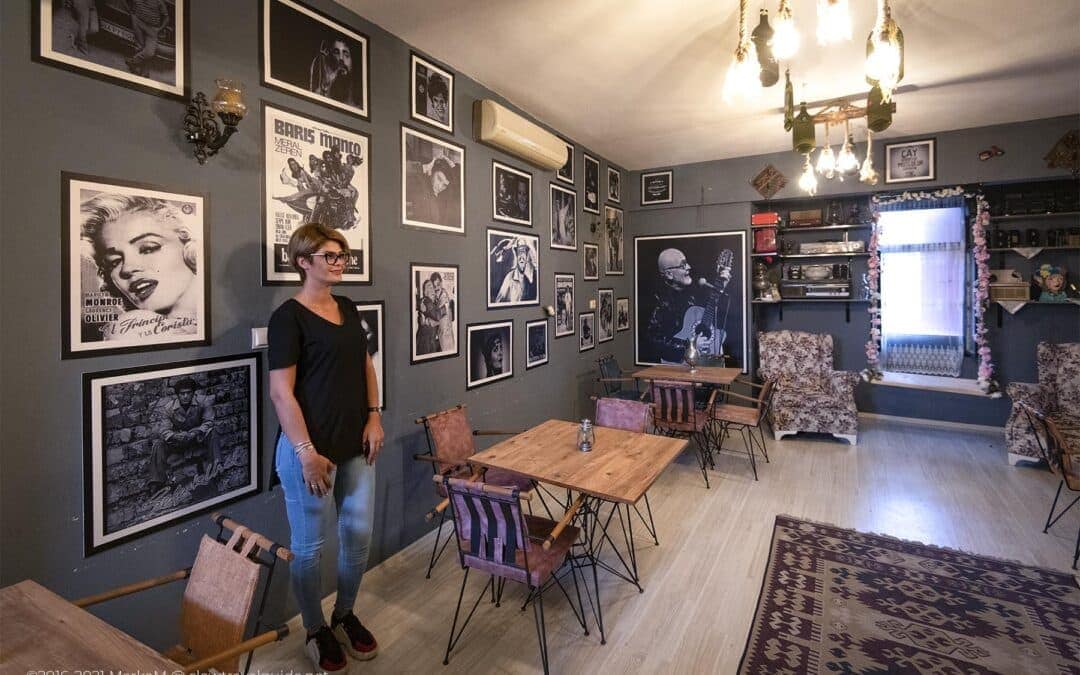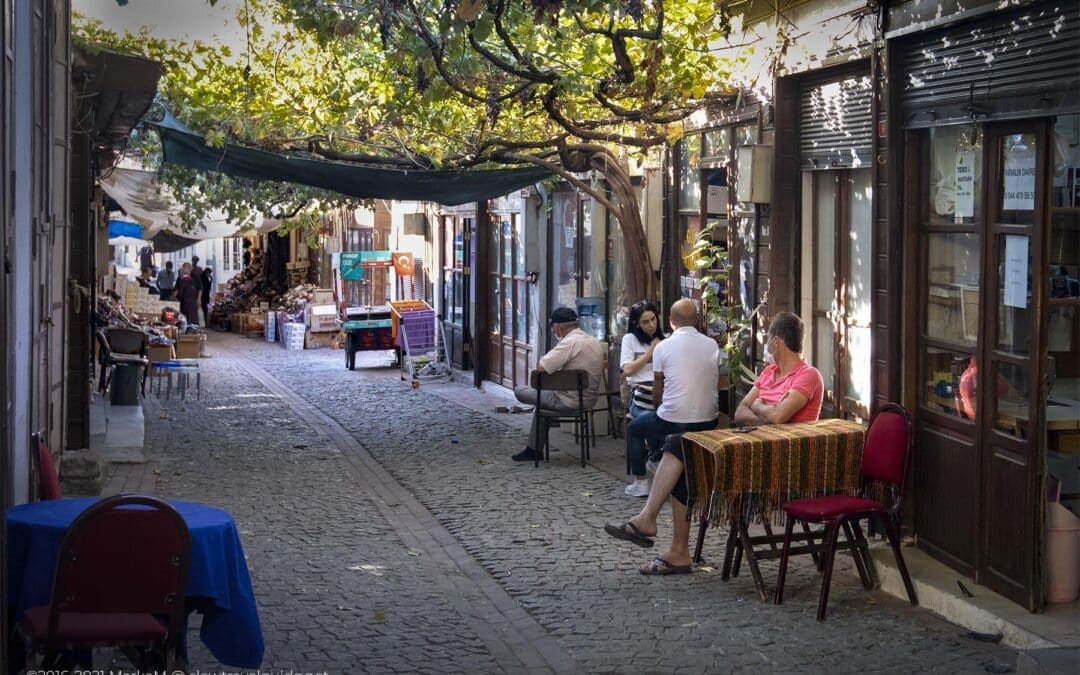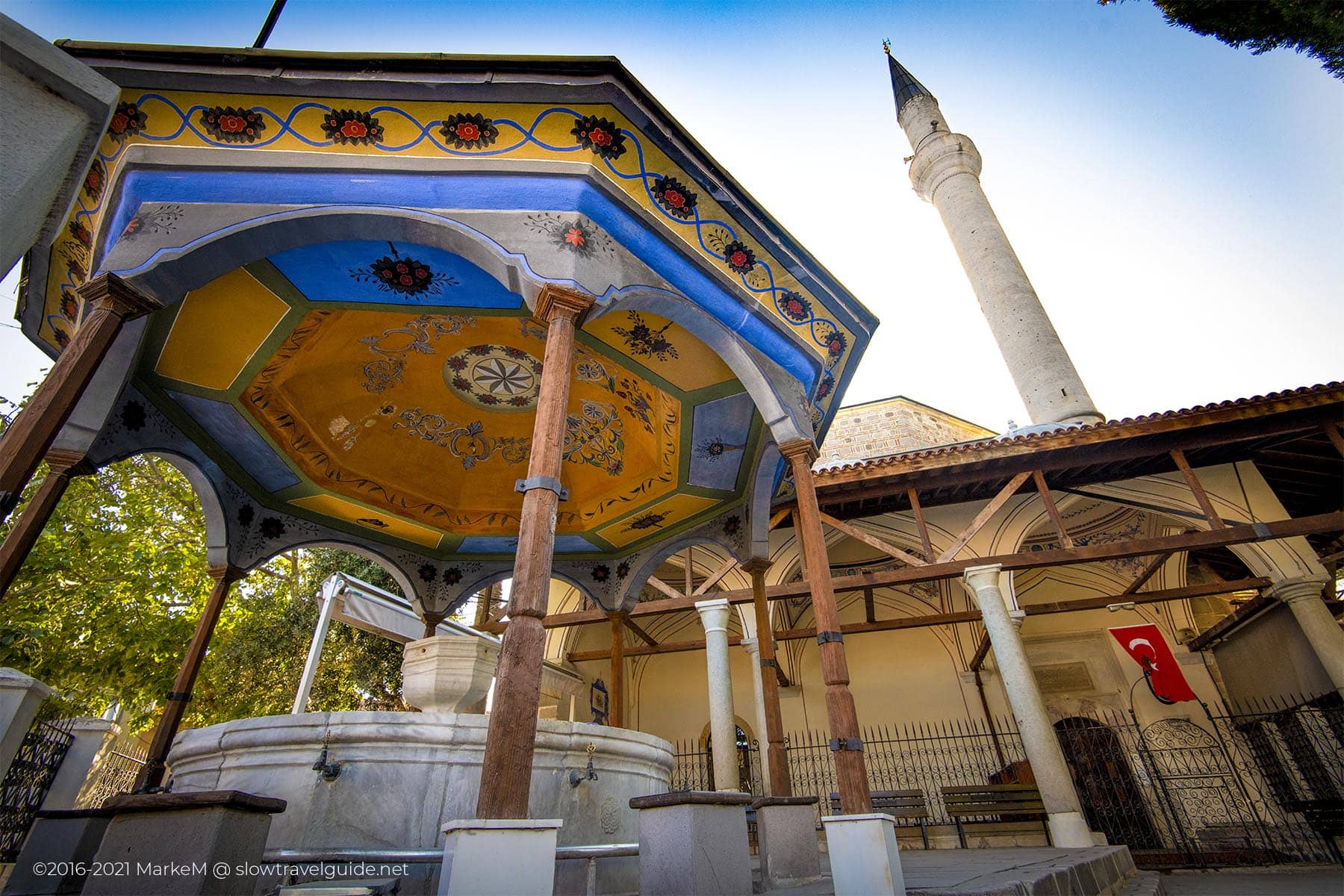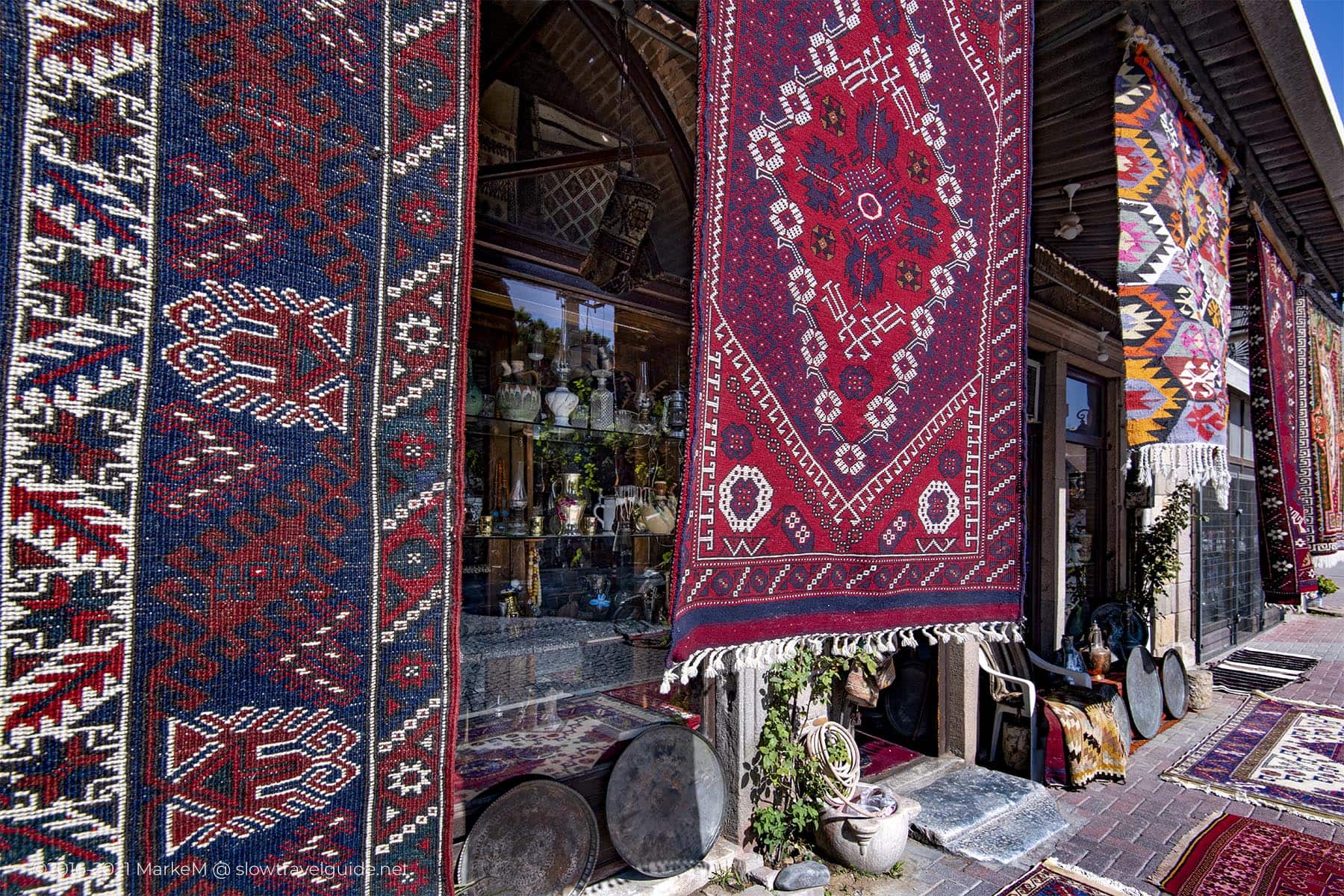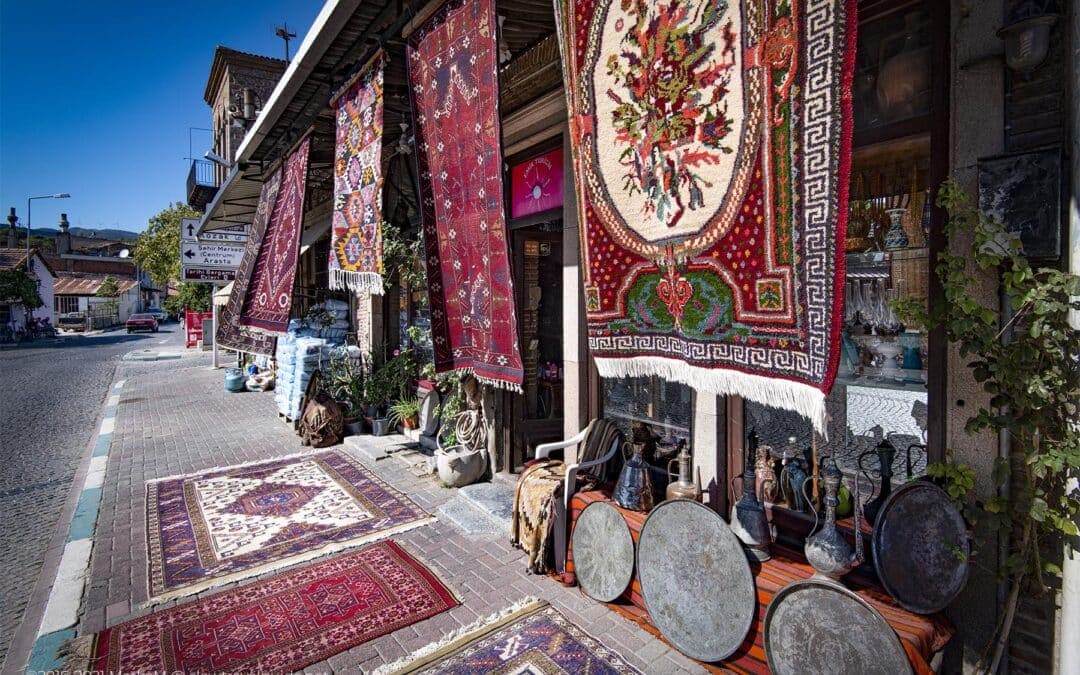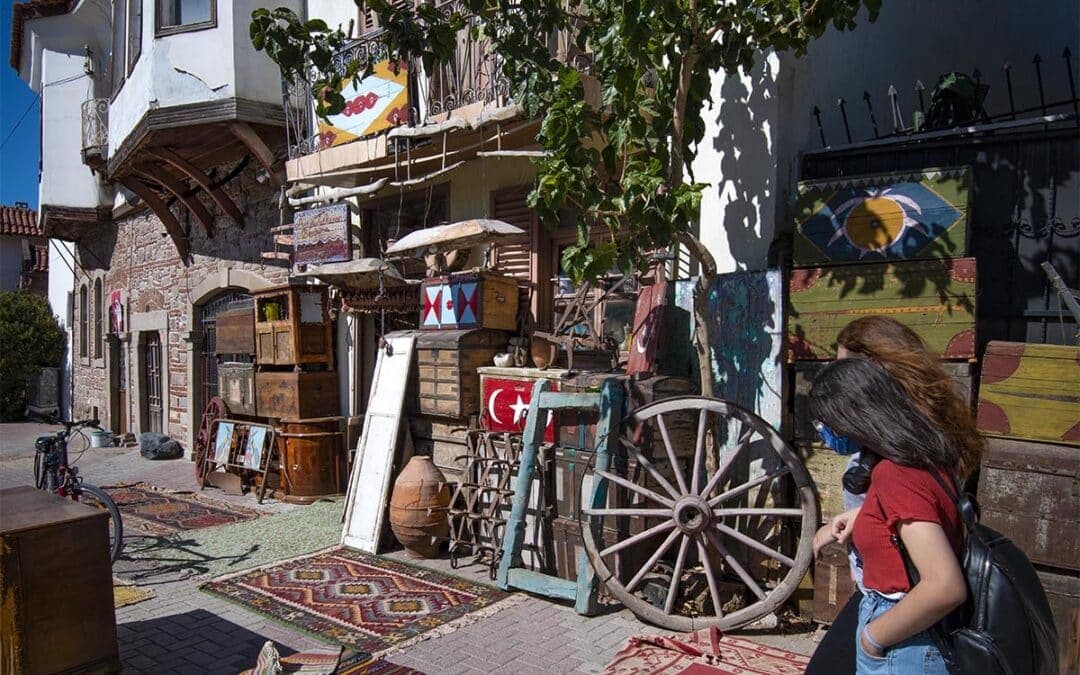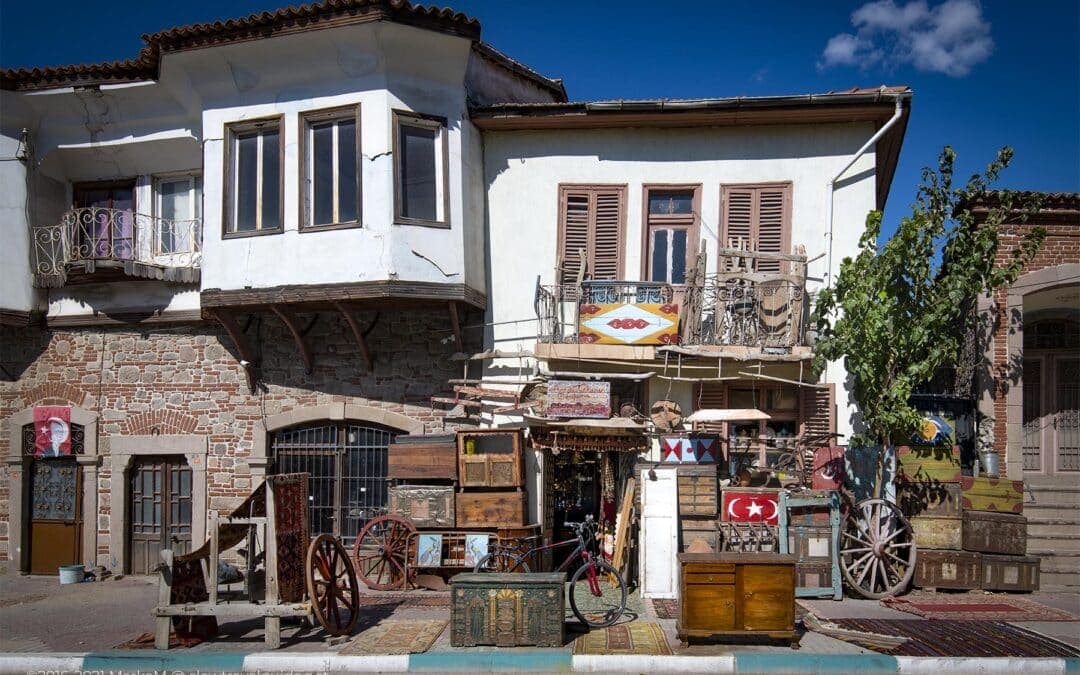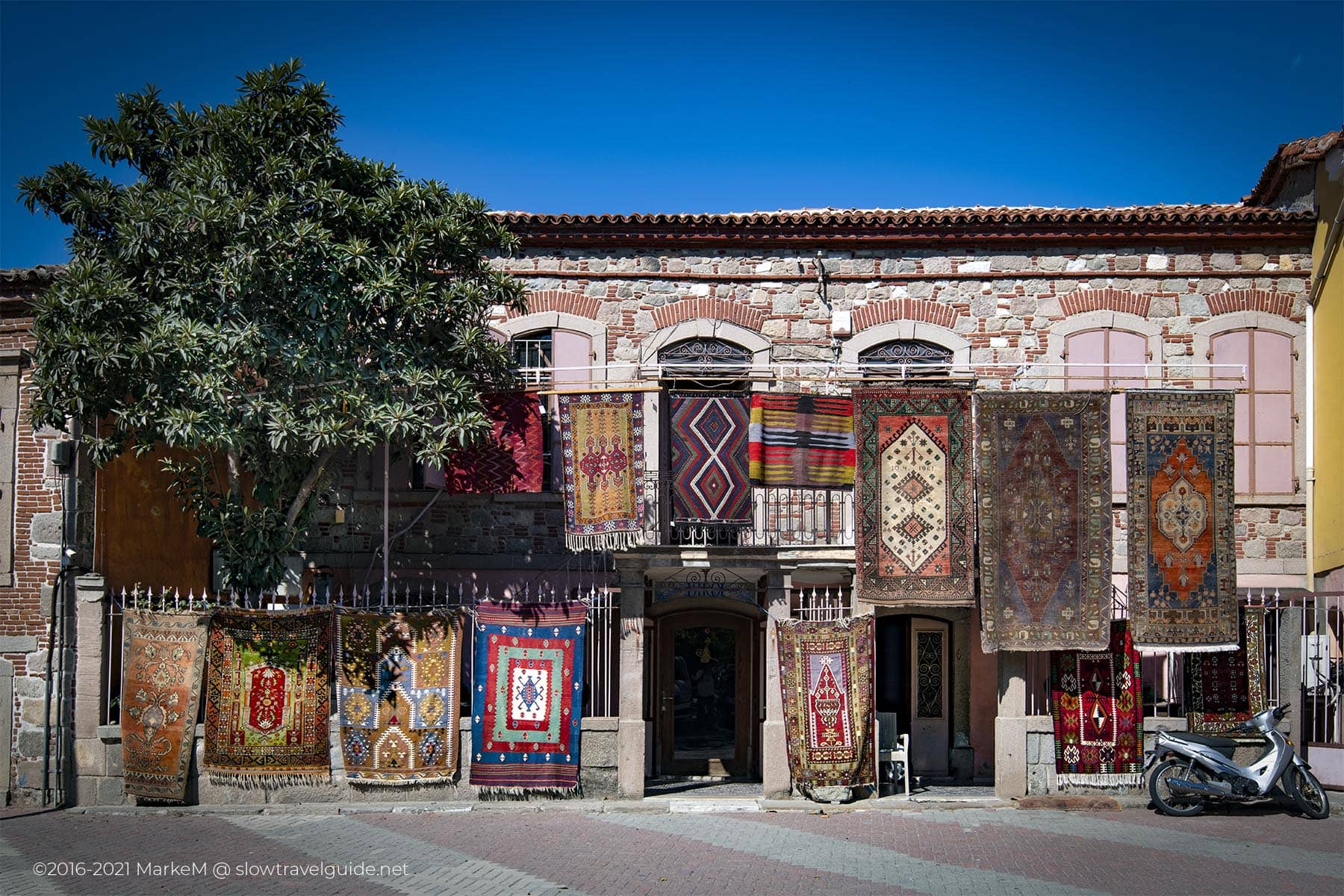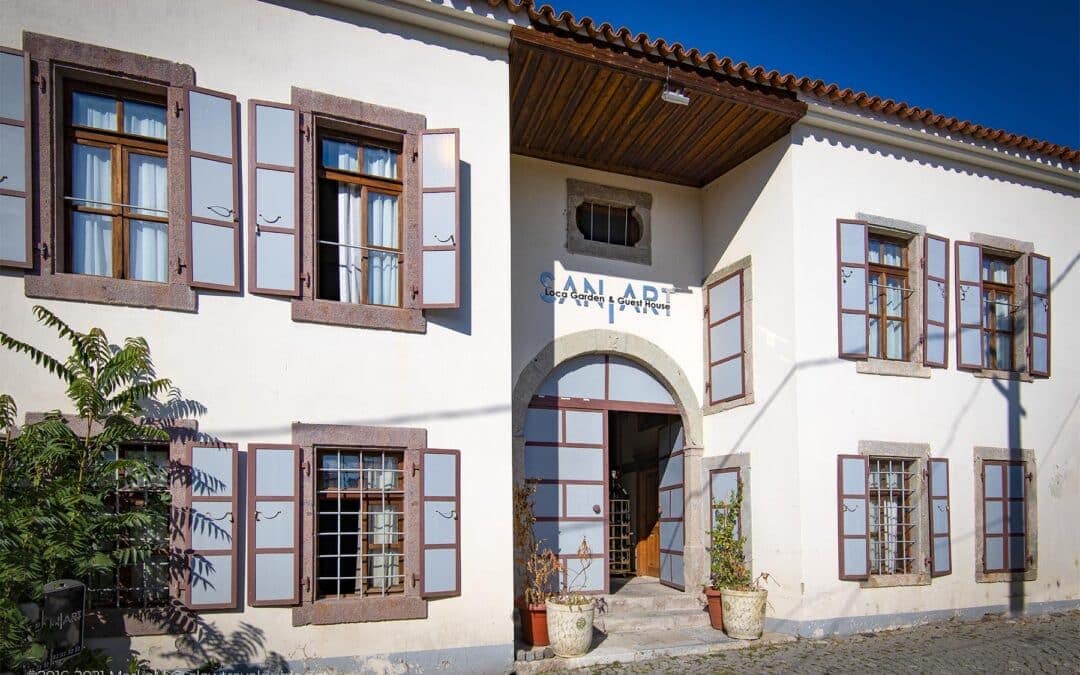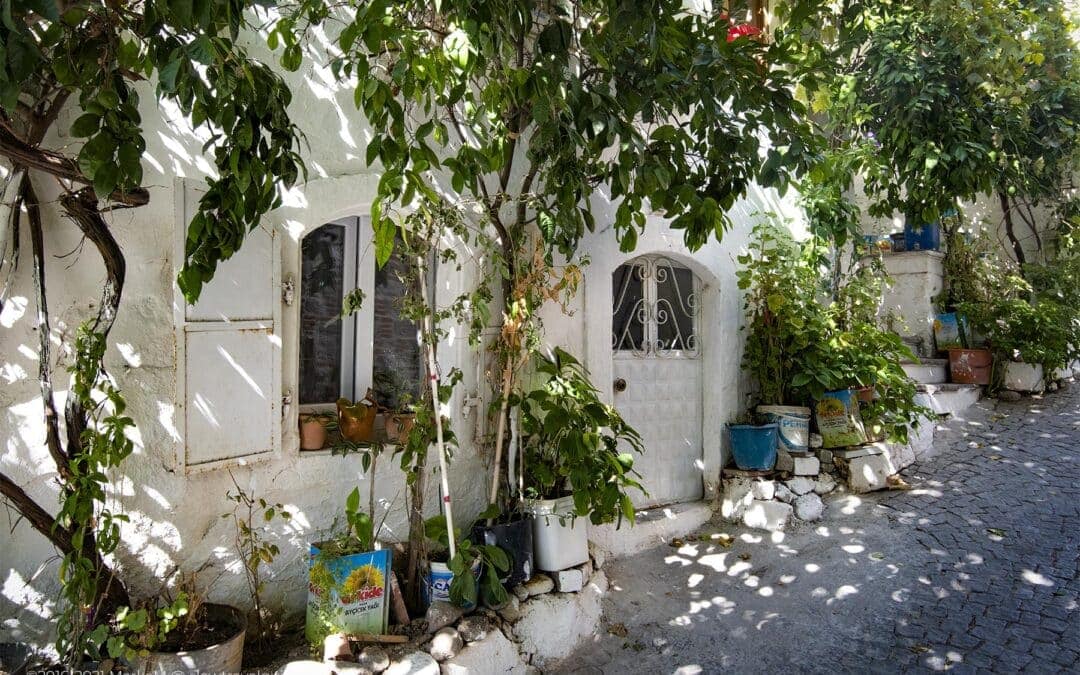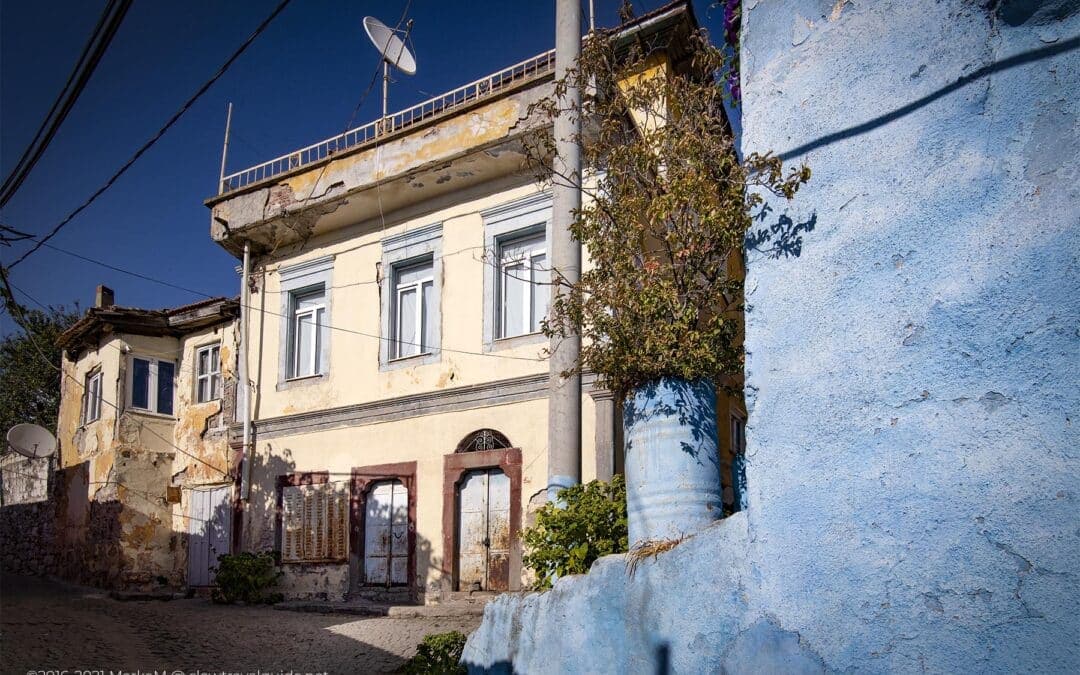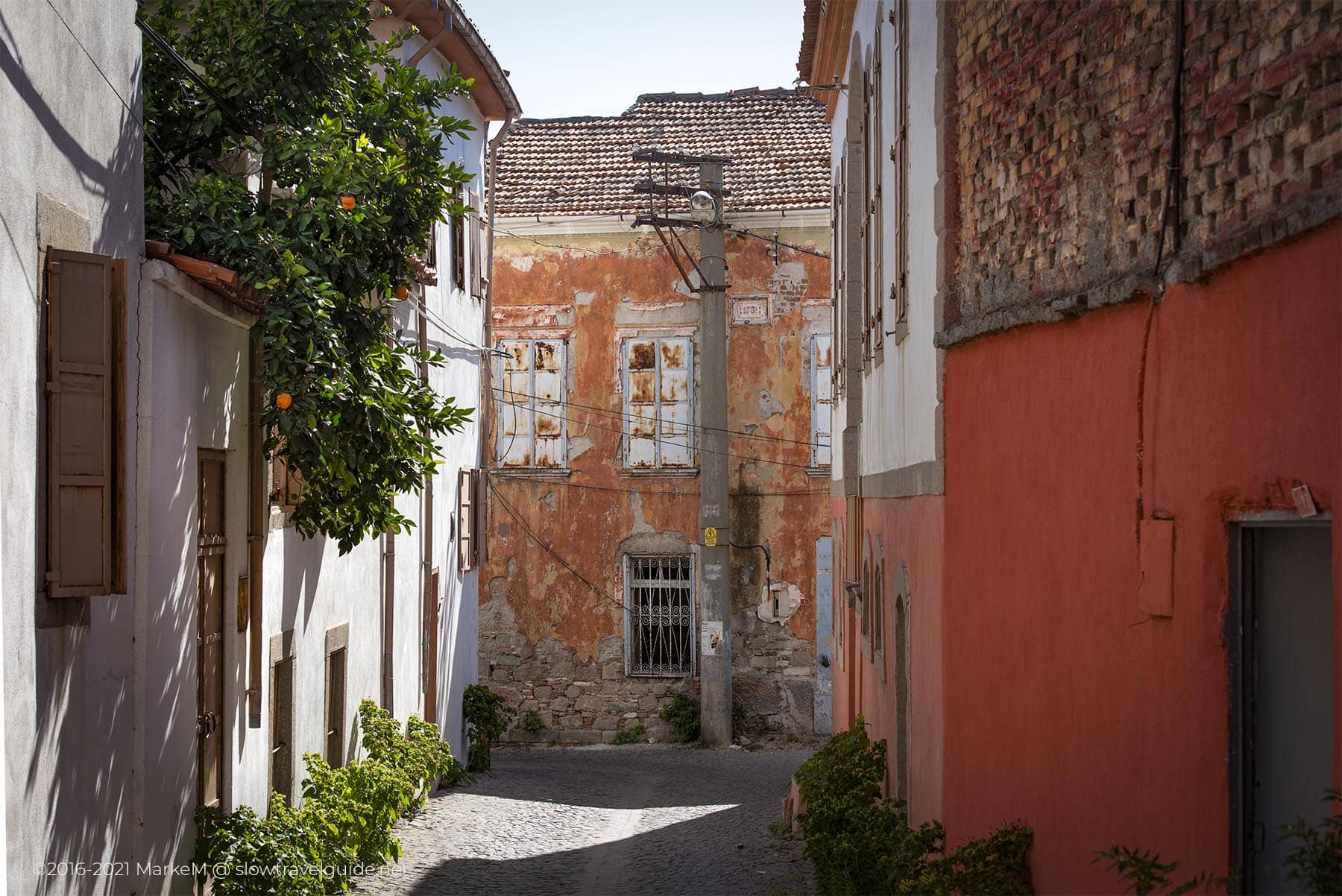Bergama
By Slowtravelguide
BERGAMA
BERGAMA: LIFE IN THE SHADOW OF THE PERGAMON ACROPOLIS
Its UNESCO World Heritage site often overshadows Bergama, just below the Pergamon Acropolis. Travellers in a rush to wrongly tick off the boxes on their bucket lists tend to skip it. We hope this post will change this, and a few more people will allow more time to visit the Acropolis of Pergamon, the Asklepieion and the lovely and authentic Bergama between those two sites. We’ve mentioned it in our Pergamon post: you need at least two days to visit this area. And trust us, that is the absolute minimum!
We’ll give you three good reasons to visit Bergama and plenty of photos to whet your appetite. If you’re still not convinced after that, at least we’ll know that we’ve tried.
1. Bergama Has a Lovely Old Kale Quarter
Right under the Acropolis lies Bergama’s Kale or Talatpaşa Mahallesi, where old Greek houses are lined up in narrow cobbled streets where children play. This part of town is a world on its own, and the colourful houses reflect its emotional story. Walking up and down Kale Mahallesi’s streets, you’re met with a mishmash of dilapidated houses, restored mansions, now boutique hotels, the lively sounds of day-to-day life, and the sound of silence waiting just around a corner.
Take your time and go for a stroll throughout the entire neighbourhood. Pop in at the public library in one of the historic buildings, take in the houses’ details restored and unrestored and stop for some delicious mezze or refreshments at the Akropol restaurant, located in a quiet and lush garden overlooking the town below. This old mansion looks deceivingly modest and small, but it stretches over several floors and features a vaulted basement that used to be a tunnel leading to the Pergamon Acropolis. The Bergama Chamber of Commerce operates the restaurant and offers – besides grand vistas – good value for money.
2. Bergama Is Authentic & Full Of History
People often ask us where they can find ‘authentic’ Turkish villages and towns. Usually, by authentic, somebody means quaint and picturesque. To us, authenticity involves that it is quintessential ‘Turkish’. A place that hasn’t lost its soul to adapting to the tourism industry’s ever-growing demands, a place that feels like Turkey. And yes, Turkey has many faces, so any of those or a combination will do. Bergama ticks all those boxes. It’s a melting pot of tradition, structures dating back to antiquity, and modern-day Turkey with buzzing bazaars, workshops, and quirky cafés and shops.
In Bergama, you’ll run into someone with a horse and cart one moment and have tea in an eclectic vintage café next.
This Is Not A Tourist Attraction!
Bergama’s Arasta is at the heart of it all with its tiny shops, restored Bedesten, local eateries, and coffee houses. Pick your favourite place to sample fresh black mulberry juice, a local speciality, or have a classic Turkish coffee or tea. If you love shopping, you can’t afford to miss this place! If you don’t like shopping, you need to visit anyway! The Arasta, or historic bazaar, is centrally located and a perfect starting place to explore its surrounding streets and quarters.
Don’t miss the Ulu Camii built-in 1399, the bridge houses over the Bakırçay River, the old hammams, some expertly restored, the covered bazaar or the Bergama Museum, where many of the finds from Pergamon are exhibited. If you’re lucky, you’ll run into the performing musicians at Atmaca Mahallesi, a part of town renowned for its musical performers. And even if you don’t see them, you’ll hear them play from another part of town sometime during the day. Click here to watch a short performance of the clarinet players. From Atmaca, it’s only a short walk to the beautiful Asklepieion of Pergamon.
Bridge Houses Over The Bakırçay River With The Library Behind Them
Şadırvan Camii In Bergama
3. Bergama Is Home To The Bergama Carpets
It’s hard to miss them, the colourful shops with stunning handwoven Bergama carpets. Bergama has been the commercial centre for the carpets woven in the surrounding villages since ancient times. Here, you’ll find Bergama carpets originating from one of the approximately 70 villages nearby where carpets are woven. Typical Bergama carpets are woven with symmetrical knots and usually use black, red, green, blue, yellow, and pink as their dominant colours. They are made of Anatolian sheep wool, and the yarns are produced traditionally. Bergama carpets often have floral motifs, though you will also find examples of geometric shapes and patterns. Even if you’re not in the market for a carpet, the carpet shops in Bergama are a treasure trove to discover.
If you love carpets and are here during the summer months, check out these carpet fields!
Final Thoughts On Visiting Bergama
Bergama is full of charm and typically Turkish. Its sole purpose shouldn’t function as a transit town between the Pergamon Acropolis and the Asklepieion. However, you should visit these other two sites as well. We want to repeat what we’ve said in our Pergamon guide.
Pergamon and Bergama are a glorious melting pot of remaining and superimposed structures from different cultures and periods, some of which are re-used and integrated into modern life. This is what makes visits to Pergamon and Bergama unique. The town seamlessly unites Hellenistic, Roman, Byzantine, and Ottoman heritage, embracing Islam, Judaism, Christianity, and Paganism.
Could you consider at least two days and visit all the places below and the town?
You’ll need four different tickets if you want to get a complete picture. Click on the links below for current ticket prices and opening times of the locations.
Bergama is easy to reach by car and well-signposted from the E87 highway. Suppose you are relying on public transportation. You have several options, including a regular service from Kınık and Aliağa. Enter Bergama Kızılavlu (Serapion Tapınağı) as a destination on this page. The bus will take you to the beautiful Red Basilica as a starting point.
PLACES WE RECOMMEND
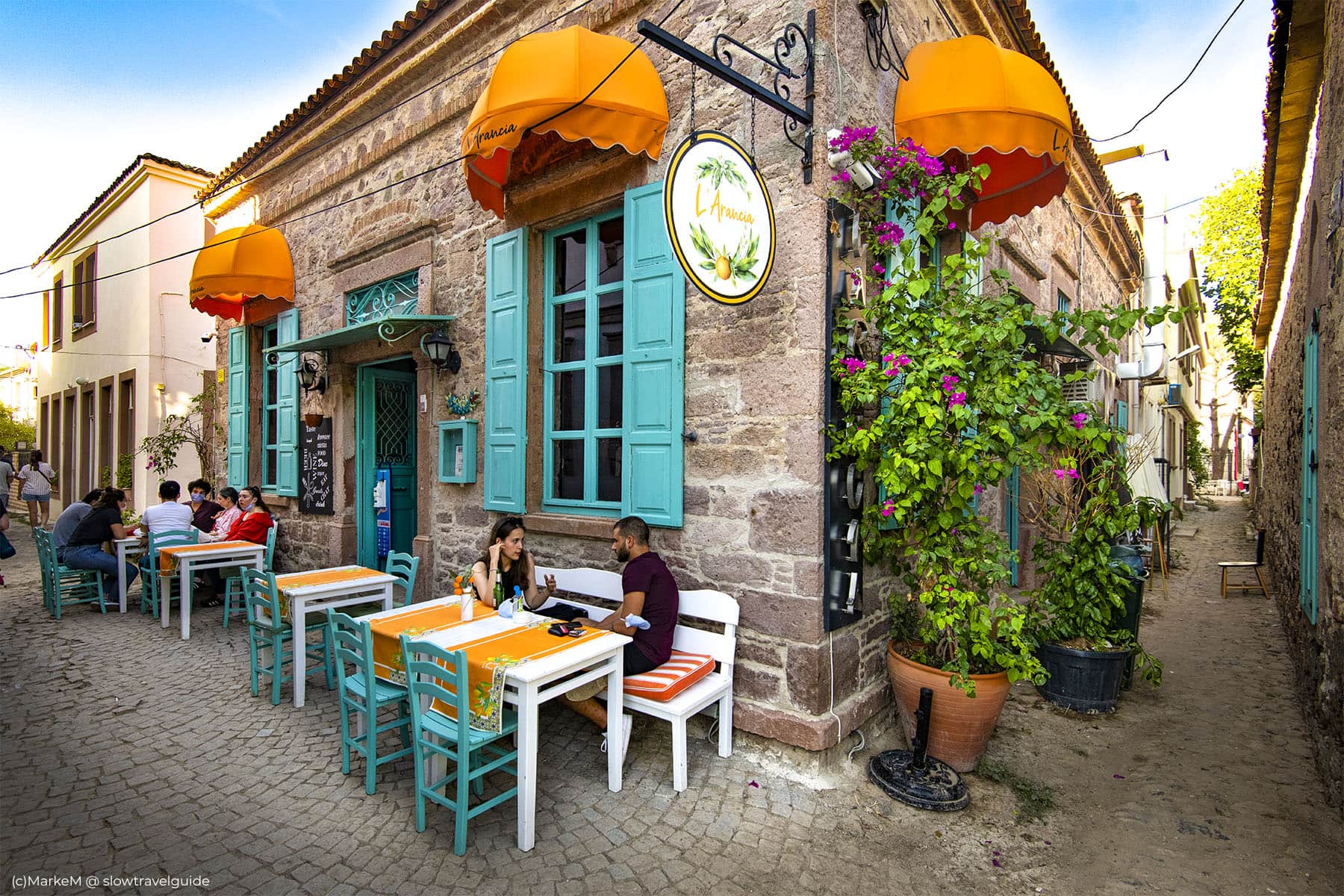
Cunda
You may or may not have heard of Cunda Island, also called Alibey Adası, a quaint little island off the coast of Ayvalık and a popular weekend destination for many Istanbulites. Though we’re labelling it as minor, it is the biggest of the Ayvalık Islands archipelago but still tiny enough to tour in a day (or two if you’re slow). (Coming soon)
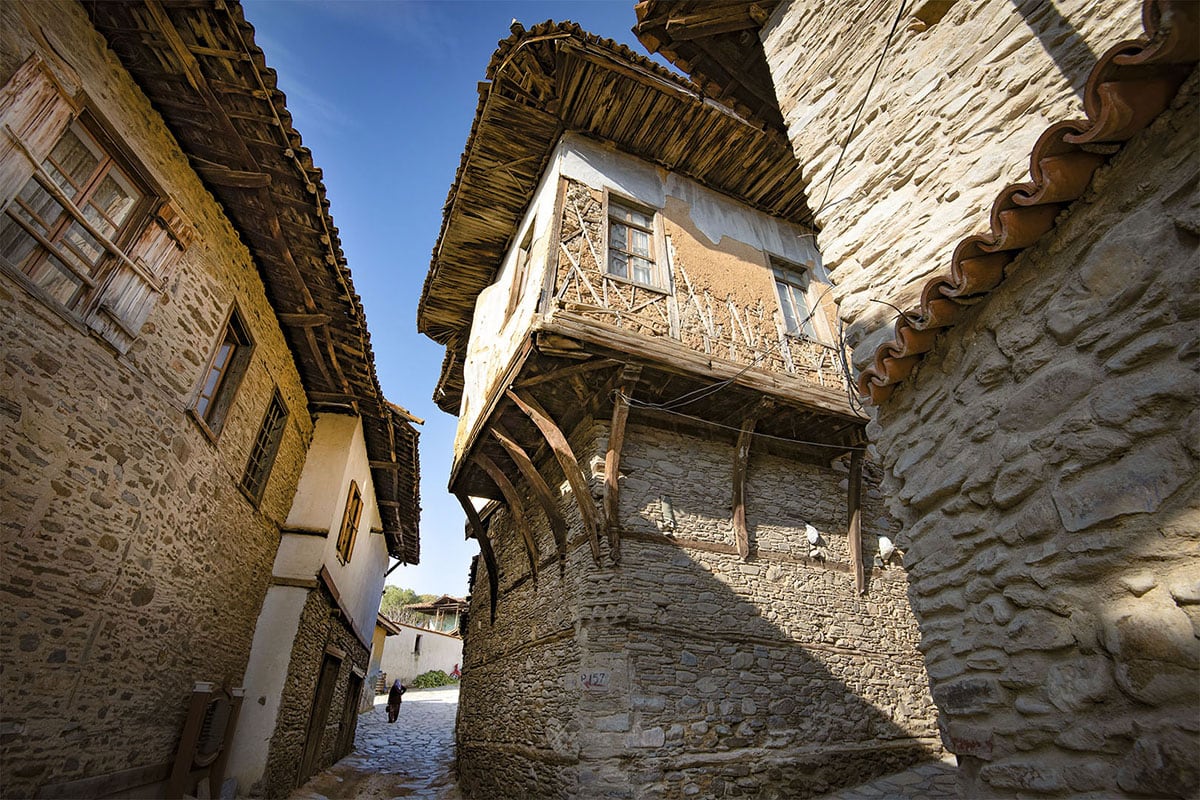
Birgi
Birgi, you’ve probably never heard of it. And yet here we are, claiming this may well be one of the prettiest villages in Turkey. Technically speaking, Birgi isn’t a village, it’s a small town not too far away from Ödemiş in the province of Izmir, but it has the feel of a quaint and authentic Turkish village. (Read more)
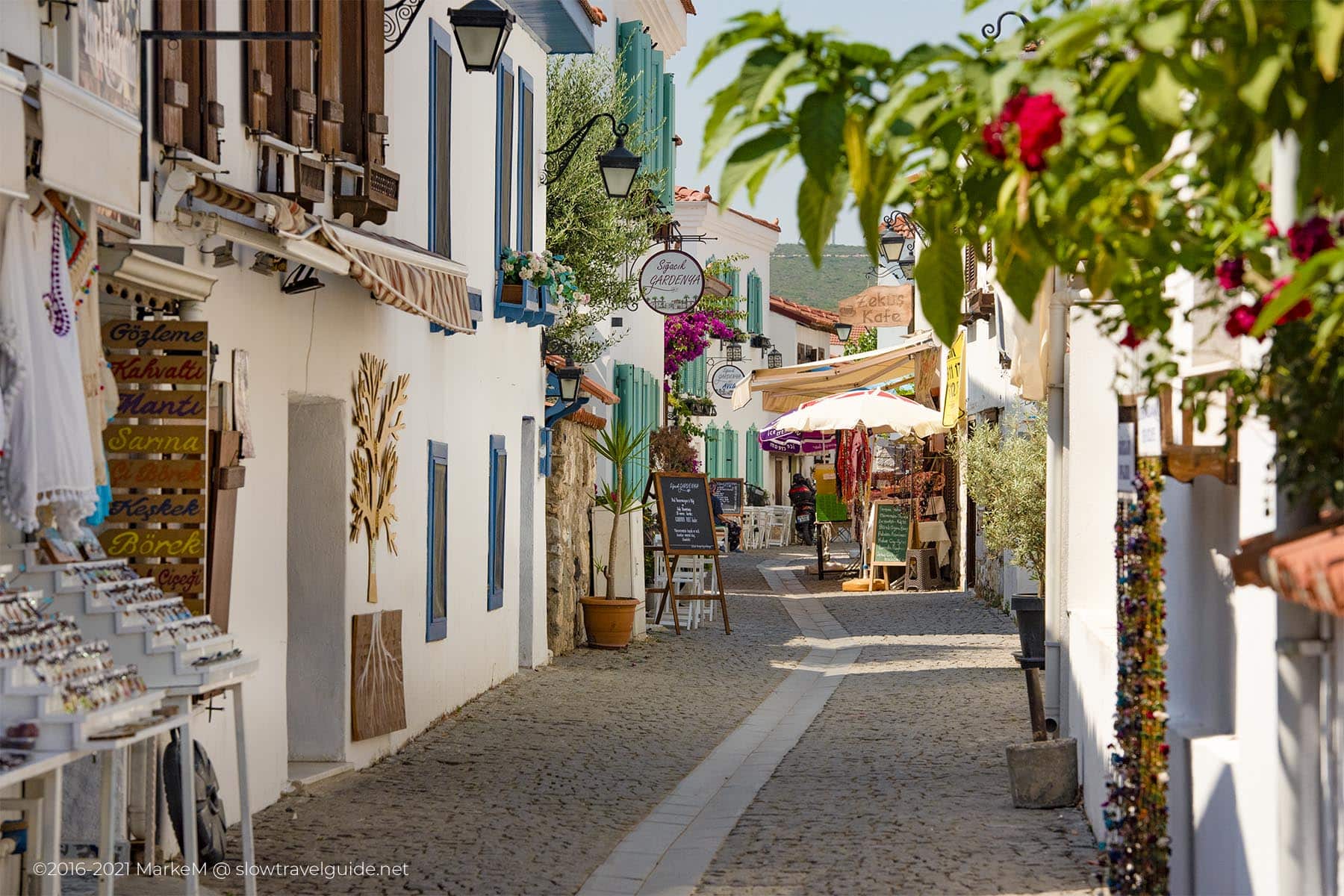
Sığacık
Why would one want to look for an alternative for Alaçatı, you may ask? Isn’t it almost perfect? Quaint, excellent wining and dining options, close to the sea and Izmir? Yes, it is. Sigacik has a few things that Alaçatı doesn’t have or no longer. This is a seaside Cittaslow village where life follows a different pace. (Read more)
POSTS NEARBY
- The Asklepieion of Pergamon: mystic & sacred treatment centre (1,27 km)
- The sad truth about Pergamon, a UNESCO World Heritage site (1.29 km)
If you have any questions about Bergama, feel free to ask. You can message us through our contact page or leave a comment on our Instagram or Facebook pages.
You can also join our group Turkey Travel Photography on Facebook to share your lovely photos or experiences about Turkey.
© 2016-2022 All rights reserved by slowtravelguide.net.
The content of this website is copyright protected and the property of slowtravelguide.net.No part of this website may be reproduced in whole or in part in any manner without the written permission of the copyright owner.
Copyright ©2016-2022 Tüm hakları saklıdır. Bu (slowtravelguide.net.) web sitesinin içeriği koruma altındadır ve slowtravelguide.net.Buradaki hiçbir içerik (yazı,fotoğraf,video vb.) izinsiz olarak kopyalanamaz, alıntı yapılamaz,başka yerde yayınlanamaz.

